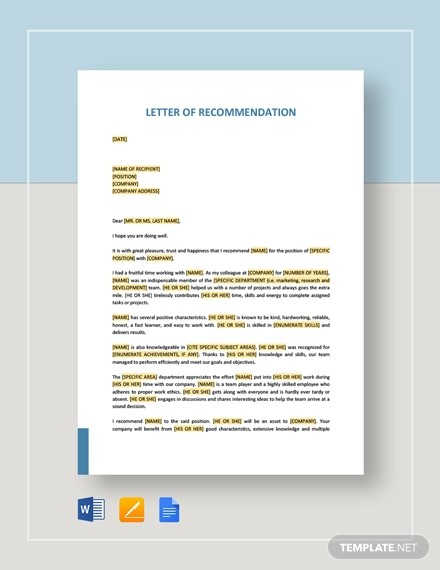105+ Recommendation Letter Examples to Download
A recommendation letter is a document requested by an entity to know more information about an individual’s qualities and competencies. It can also be used to validate the items that a person has stated in his/her professional profile. There are a lot of purposes for a recommendation letter, but it is commonly needed in the field of academics and business.
These being said, a formal letter of recommendation is an assessment of an individual’s performance on various aspects which should be associated with the content of the candidate’s application letter. Keep in mind that this kind of letter is done by a reference who should have a professional relationship with the person to whom the specific letter is for.
What is Recommendation Letter?
A recommendation letter is a letter written by someone who knows you well, often a teacher, boss, or colleague, to say good things about your skills, character, and achievements. It’s used when you’re applying for a job, a scholarship, or college, to show others why you’re a great choice. This letter helps people who don’t know you yet understand what makes you special and why you would do well in the job or program you’re applying for. It’s like a stamp of approval from someone who trusts you and believes in your abilities.
Recommendation Letter Format
[Your Name]
[Your Title/Position]
[Your Company/Organization if applicable]
[Your Contact Information]
[Date][Recipient’s Name (if known)]
[Their Title/Position]
[Company/Organization Name]
[Company/Organization Address]Dear [Recipient’s Name or “To Whom It May Concern”],
Introduction
Start with a brief introduction of yourself, your professional relationship with the person you’re recommending, and the purpose of the letter. Mention how long you’ve known the person and in what capacity.
Body Paragraph(s)
- First Paragraph: Provide an overview of the candidate’s key strengths, skills, and contributions. Highlight their role, responsibilities, and achievements while working with or under your supervision.
- Second Paragraph: Go into more detail about specific qualities that make the individual stand out, such as their work ethic, leadership skills, academic prowess (if applicable), and personal character. Provide examples or anecdotes to illustrate these attributes.
- Additional Paragraphs (if necessary): You can include information about the candidate’s personal qualities, how they interact with others, and their potential for future success in their new role or academic pursuit.
Conclusion
Conclude by summarizing the individual’s qualifications and reiterating your strong recommendation. Offer your belief in their suitability and potential for success in the position or program they are applying for.
Closing
End with a formal closing, such as “Sincerely,” or “Best regards,” followed by your signature (if sending a hard copy) and typed name.
[Your Signature (if applicable)]
[Your Typed Name]
[Your Position/Title]
[Your Contact Information (optional)]
Example of Recommendation Letter
Free Download in Word Free Download in PDFDr. John Smith
Professor of Mathematics
University of Hometown
123 College Lane
Education City, EC 45678
john.smith@unihometown.edu
(555) 123-4567
February 26, 2024Admissions Office
Dream University
789 Future Road
Academic City, AC 98765Dear Admissions Committee,
I am writing to wholeheartedly recommend Emily Johnson for admission to your undergraduate program at Dream University. As Emily’s mathematics teacher for the past two years at University of Hometown, I have been impressed by her exceptional analytical skills, dedication to learning, and leadership within the classroom.
Emily has consistently demonstrated a keen interest in mathematics, often going beyond the curriculum to explore complex concepts. Her ability to grasp difficult mathematical theories and apply them to solve real-world problems is remarkable. Notably, Emily led our school’s Math Club to a first-place victory at the National High School Math Challenge, showcasing her leadership skills and her ability to work effectively with a team.
Beyond her academic talents, Emily exhibits maturity, compassion, and perseverance. She has volunteered as a tutor for underprivileged students, demonstrating her commitment to using her knowledge to help others. Her empathy and dedication have made a significant impact on our community.
I am confident that Emily will bring the same enthusiasm, skill, and dedication to her studies at Dream University as she has shown here. She is a motivated student and a natural leader who is well-equipped to meet the challenges of a rigorous academic environment. Emily has my highest recommendation for admission to your esteemed program, as I believe she will be a valuable addition to your university community.
Please do not hesitate to contact me if you need further information or insights regarding Emily’s qualifications and character.
Sincerely,
[Signature, if sending a hard copy]
Dr. John Smith
Professor of Mathematics
University of Hometown
john.smith@unihometown.edu
(555) 123-4567
Letter of Recommendation for Student
Free Download in Word Free Download in PDF[Your Name]
[Your Position]
[Your School/Institution]
[School/Institution Address]
[City, State, Zip Code]
[Your Email Address]
[Your Phone Number]
[Date][Recipient’s Name or “Admissions Committee”]
[Title/Position, if known]
[Institution/Company Name]
[Address]
[City, State, Zip Code]Dear [Recipient’s Name or “Admissions Committee”],
I am writing to wholeheartedly recommend [Student’s Name] for admission to [Program or University Name]. As [Your Position], I have had the pleasure of observing [Student’s First Name]’s remarkable academic journey and personal growth over the past [Number] years at [Your School/Institution].
[Student’s First Name] stands out as an exceptional student due to their [specific academic skills, e.g., analytical thinking, creative problem-solving], and unwavering dedication to excellence. Not only has [he/she/they] consistently ranked among the top [percentage] of [his/her/their] class, but [Student’s First Name] has also actively contributed to [specific examples, e.g., school projects, clubs, or community service].
Beyond [his/her/their] academic achievements, [Student’s First Name] possesses a maturity and sense of responsibility that sets [him/her/them] apart. [He/She/They] has demonstrated leadership qualities through [specific examples, such as leading a team project or serving in a student organization], showcasing [his/her/their] ability to inspire and collaborate with peers.
[Student’s First Name]’s commitment to [specific field or interest] is evident in [his/her/their] pursuit of knowledge and involvement in [related activities or projects]. [He/She/They] has expressed a genuine interest in [specific aspects of the program or field they are applying to], and I am confident that [he/she/they] will bring a unique perspective and enthusiastic inquiry to your program.
I strongly believe that [Student’s First Name] is well-prepared to meet the challenges presented by [the program or opportunity], and will make a valuable addition to your academic community. [His/Her/Their] passion, resilience, and commitment to making a meaningful impact are commendable, and I am excited to see the contributions [he/she/they] will make.
Please do not hesitate to contact me if you require further information or specific examples of [Student’s First Name]’s work and achievements. I am eager to provide any assistance that will help you in your decision-making process.
Thank you for considering this recommendation.
Sincerely,
[Your Signature, if sending a hard copy]
[Your Typed Name]
[Your Position]
[Your Contact Information]
Recommendation Letter for Employee
Free Download in Word Free Download in PDF[Your Name]
[Your Position]
[Your Company]
[Company Address]
[City, State, Zip Code]
[Your Email Address]
[Your Phone Number]
[Date][Recipient’s Name or “Hiring Manager”]
[Recipient’s Position, if known]
[Company/Organization Name]
[Address]
[City, State, Zip Code]Dear [Recipient’s Name or “Hiring Manager”],
I am delighted to write this letter of recommendation for [Employee’s Name], who has worked under my supervision as [Employee’s Position] at [Your Company] for [Duration of Employment]. [Employee’s First Name]’s exceptional skills and unwavering dedication have been invaluable to our team.
During [his/her/their] tenure with us, [Employee’s First Name] has consistently demonstrated an excellent ability in [specific skills or areas, e.g., project management, customer service]. [He/She/They] has played a key role in [specific projects or achievements], showcasing [his/her/their] ability to [describe abilities, such as solve complex problems, improve processes, lead teams].
[Employee’s First Name] is not only skilled in [his/her/their] technical abilities but also excels in soft skills. [He/She/They] has remarkable communication skills, both with clients and within our team, fostering a collaborative and positive work environment. [His/Her/Their] leadership and ability to motivate others have contributed significantly to our team’s success.
One of [Employee’s First Name]’s most notable contributions was [describe a significant contribution or project], which resulted in [describe the outcome, such as increased sales, improved efficiency, customer satisfaction]. This achievement is a testament to [his/her/their] hard work, strategic thinking, and commitment to excellence.
[Employee’s First Name] is a self-motivated individual who is always eager to learn and take on new challenges. [His/Her/Their] positive attitude and adaptability make [him/her/them] a valuable asset to any team. I have no doubt that [Employee’s First Name] will bring the same level of dedication and exceptional performance to [his/her/their] future endeavors.
Please feel free to contact me at [Your Phone Number] or [Your Email Address] if you need further information or to discuss [Employee’s First Name]’s qualifications and achievements in more detail. I am confident that [Employee’s First Name] would be a great addition to your team and has my highest recommendation.
Sincerely,
[Your Signature, if sending a hard copy]
[Your Typed Name]
[Your Position]
Letter of Recommendation Example Template
Offer Letter of Recommendation Example Template
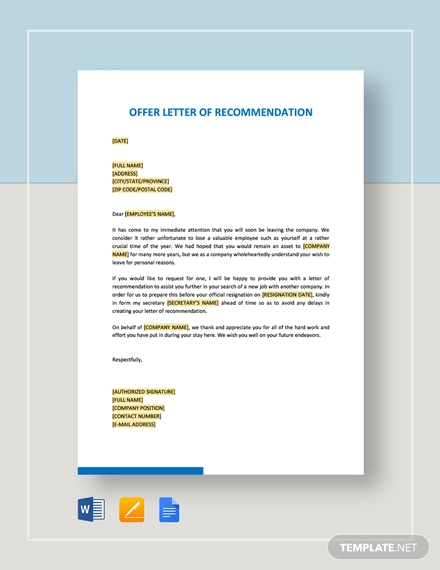
Refusal of Request for Letter of Recommendation Example Template
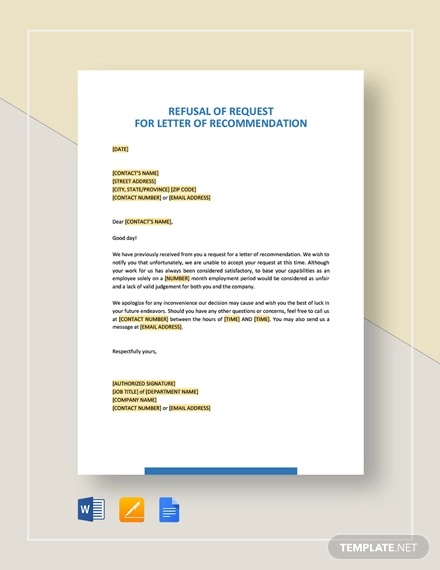
Verification of Employment and Letter of Recommendation Example Template
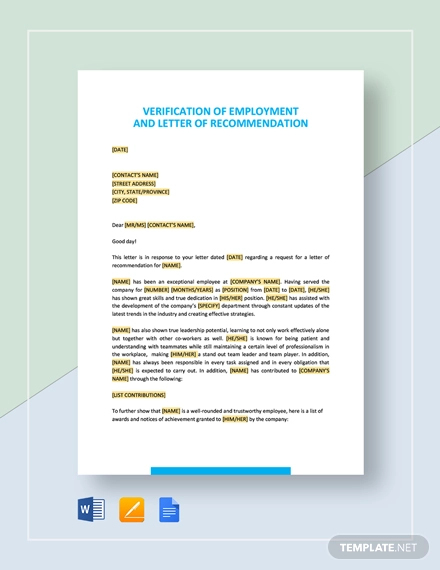
Confirmation of Employment and Letter of Recommendation Example Template
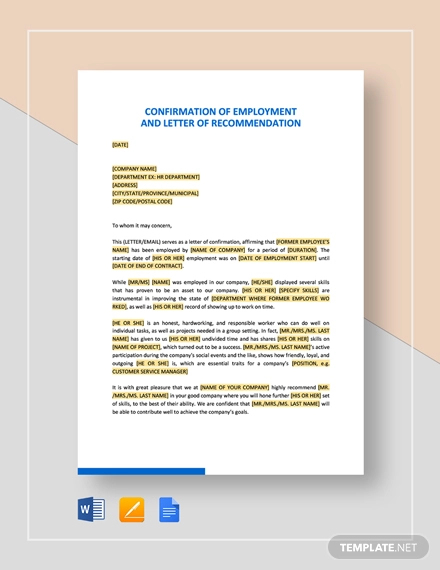
Restaurant Employee Personal Recommendation Letter Example Template
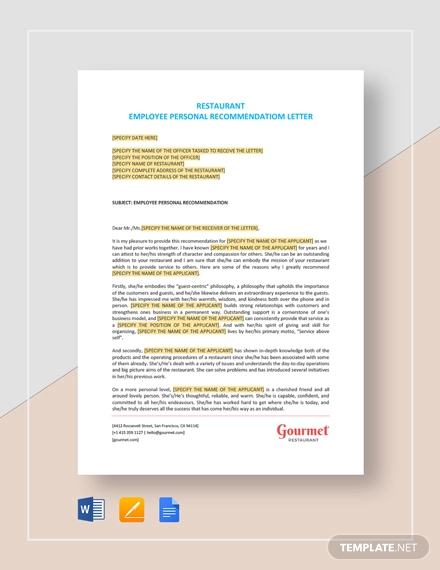
A Tactful Way to Decline to Write a Letter of Recommendation Example Template
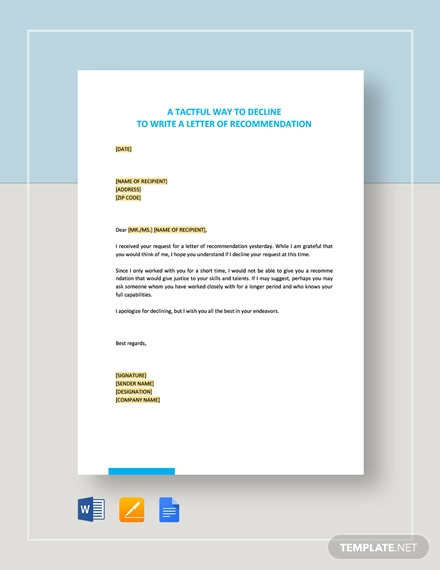
Free Recommendation Letter Format
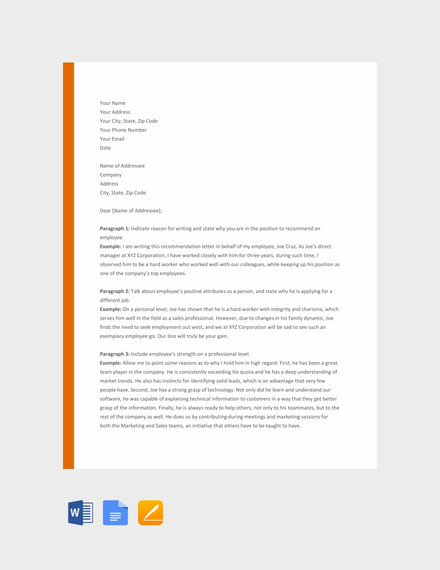
Simple Recommendation Letter Template
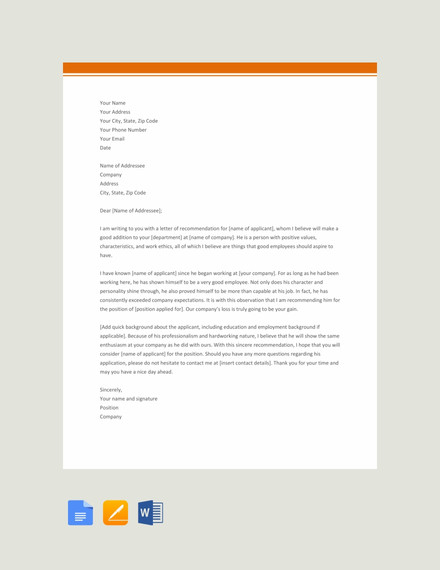
Sample Recommendation Letter Template
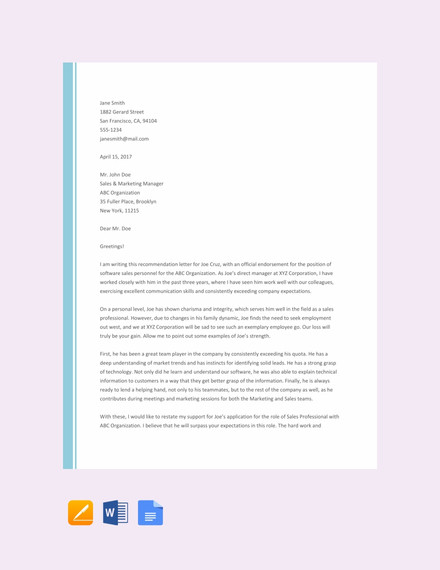
Professional Recommendation Letter Template
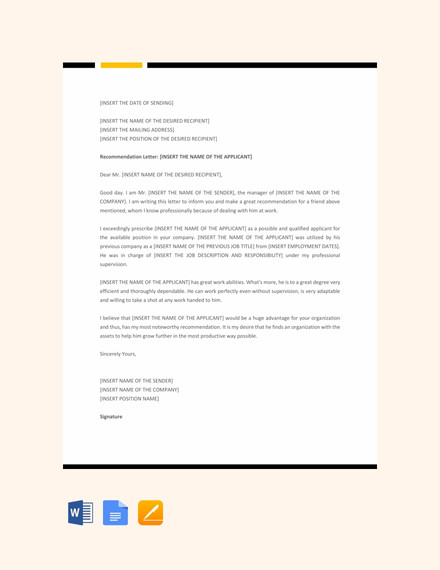
MBA Recommendation Letter From Employer Template
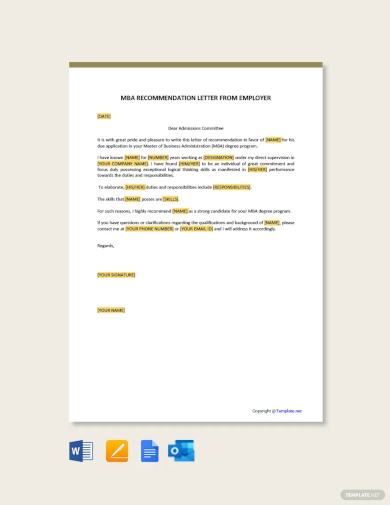
College Recommendation Letter from family friend Template
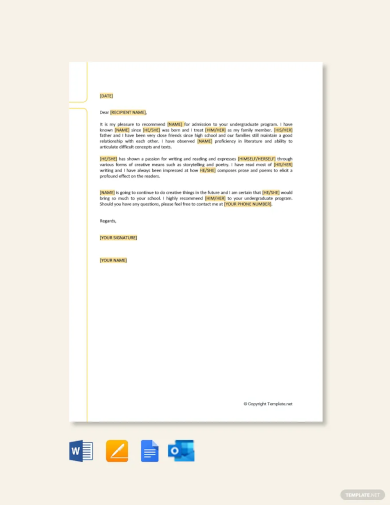
College Recommendation Letter from Employer Template
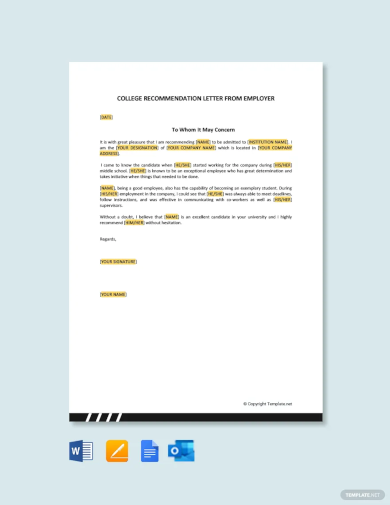
Sample Recommendation Letter for Student
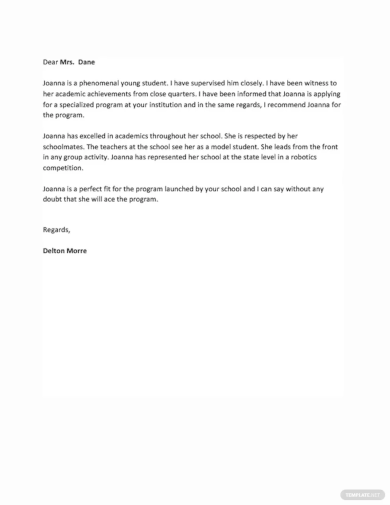
Recommendation Letter Template for Scholarship
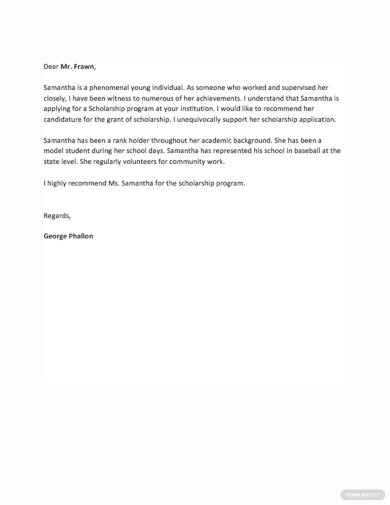
Recommendation Letter for Scholarship from Family Friend Template
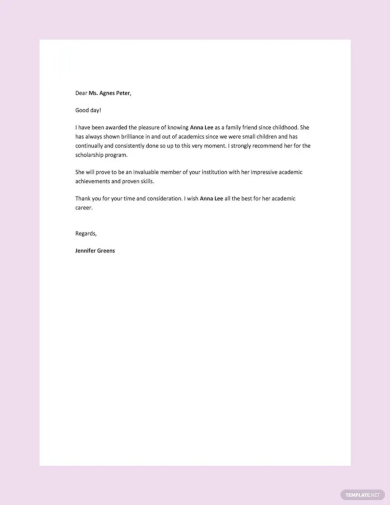
MBA Recommendation Letter Template
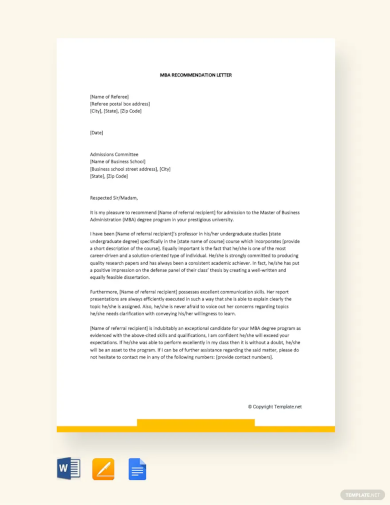
Recommendation Letter for a Teacher Template
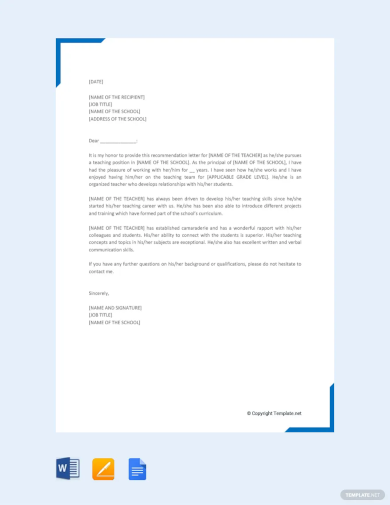
Leadership Recommendation Letter for Student Template
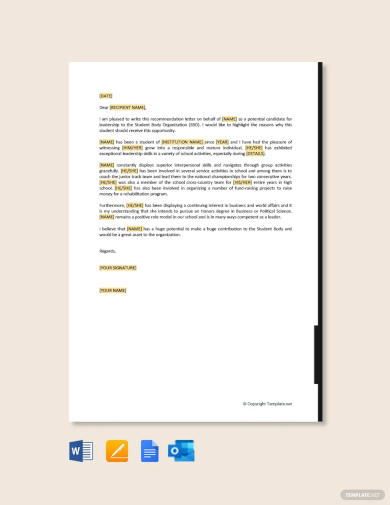
Recommendation Letter for Student From Teacher Template
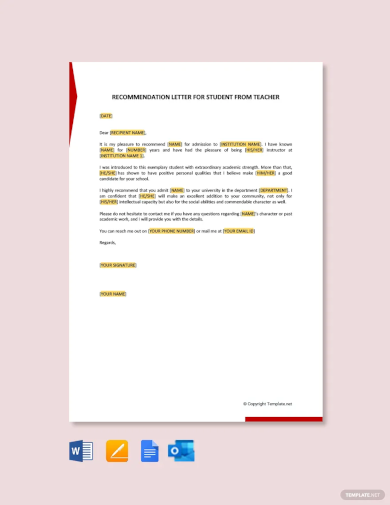
College Recommendation Letter Form a Friend Template
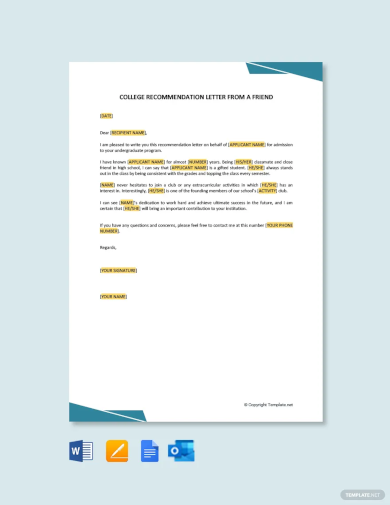
Community Service Recommendation Letter Template
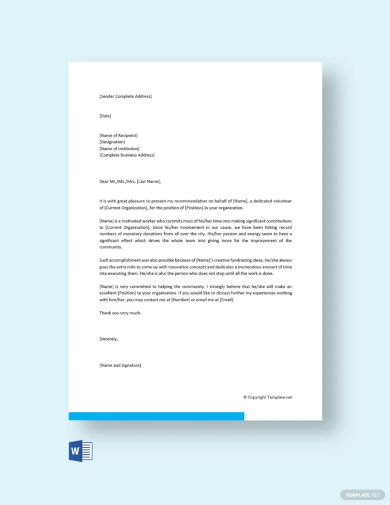
Recommendation Letter for College Template
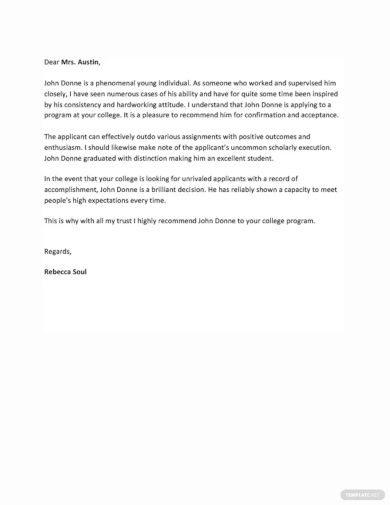
Recommendation Letter for Student Scholarship Template
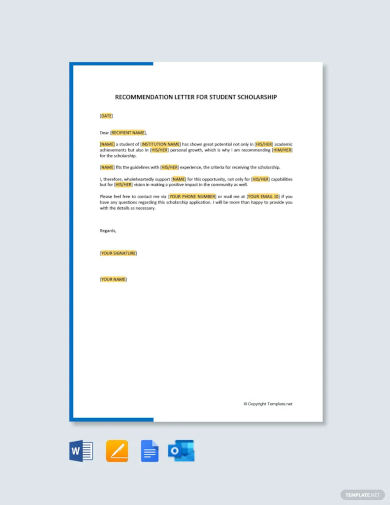
Professor Recommendation Letter Template
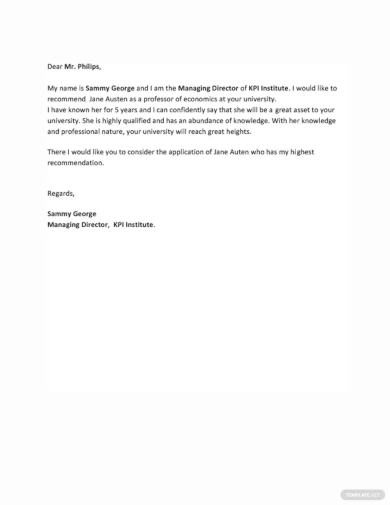
College Recommendation Letters
College Admission Recommendation Letter
College Scholarship Recommendation Letter
College Personal Recommendation Letter
Personal Recommendation Letter Examples
Personal Character Recommendation Letter
Professional Recommendation Letters
Professional Services Recommendation Letter
Professional Job Recommendation Letter
Professional Engineer Recommendation Letter
Academic Recommendation Letters
Academic Reference Recommendation Letter
Academic Performance Recommendation Letter
Academic Advisor Recommendation Letter
Academic Promotion Recommendation Letter
Business Recommendation Letter Examples
Business Partner Recommendation Letter Example
Business Analyst Recommendation Letter
Business Services Recommendation Letter
Business Client Recommendation Letter
Business Associate Recommendation Letter
Basic Recommendation Letters
Basic High School Recommendation Letter
Basic Employment Recommendation Letter
Basic College Recommendation Letter
Basic Scholarship Recommendation Letter
Bank Recommendation Letters
Request for Bank Recommendation Letter
Bank Loan Recommendation Letter
Company Recommendation Letters
Company Services Recommendation Letter
Company Business Recommendation Letter
Cleaning Company Recommendation Letter
Security Company Recommendation Letter
Church Recommendation Letters
Free Church Recommendation Letter
Church Volunteer Recommendation Letter
Church Scholarship Recommendation Letter
Doctor Recommendation Letters
Hospital Doctor Recommendation Letter
Doctor Recommendation Letter for Patient
Family Doctor Recommendation Letter
Employee Recommendation Letters
Employee Termination Recommendation Letter
Employee Promotion Recommendation Letter
Employee Transfer Recommendation Letter
Free Recommendation Letters
Free Personal Recommendation Letter
Free Employment Recommendation Letter
Free Recommendation Letter for Job
Free Recommendation Letter for Student
General Recommendation Letters
General Surgery Recommendation Letter Sample
General Contractor Recommendation Letter
General Manager Recommendation Letter
General Teacher Recommendation Letter
Internship Recommendation Letters
Employer Internship Recommendation Letter
Student Internship Recommendation Letter
Engineering Internship Recommendation Letter
Job Recommendation Letter Examples
Manager Job Recommendation Letter
Job Reference Recommendation Letter
Job Self Recommendation Letter
Job Application Recommendation Letter
Landlord Recommendation Letters
Free Landlord Recommendation Letter
Landlord Recommendation Letter
Medical Recommendation Letters
Medical Assistant Recommendation Letter
Medical Student Recommendation Letter
Medical Residency Recommendation Letter
Medical School Recommendation Letter
Nursing Recommendation Letter Samples
Hospital Nursing Recommendation Letter
Professional Nursing Recommendation Letter
Nursing Student Recommendation Letter
Nursing Scholarship Recommendation Letter
Rental Recommendation Letter
Rental Property Recommendation Letter
Rental Application Recommendation Letter
Apartment Rental Recommendation Letter
Reference Recommendation Letters
Employer Reference Recommendation Letter
Free Academic Reference Recommendation Letter
Character Reference Recommendation Letter
Scholarship Recommendation Letters
Free Scholarship Recommendation Letter
Master Scholarship Recommendation Letter
Basic Free Scholarship Recommendation Letter
Teacher Recommendation Letter Examples
Elementary Teacher Recommendation Letter
Preschool Teacher Recommendation Letter
Student Teacher Recommendation Letter
Tenant Recommendation Letters
Landlord Tenant Recommendation Letter
Commercial Tenant Letter of Recommendation
Personal Recommendation Letter for Tenant
Volunteer Recommendation Letter Examples
Hospital Volunteer Recommendation Letter
Personal Volunteer Recommendation Letter
Volunteer Work Recommendation Letter
Thank You for Recommendation Letters
Thank You for College Recommendation Letter
How to Write a Recommendation Letter
1. Understand the Purpose
Know the purpose of the letter (e.g., job application, academic admission) and the qualities or qualifications the recipient is looking for. Tailor your letter to these requirements.
2. Gather Information
Collect necessary details about the person you’re recommending. This may include their resume, the job or program they’re applying for, past achievements, and specific instances where they demonstrated valuable skills or qualities.
3. Start with a Proper Salutation
If you know the recipient’s name, use it (e.g., “Dear Dr. Jones,”). If not, “Dear Hiring Manager,” “Dear Admissions Committee,” or “To Whom It May Concern” are acceptable.
4. Introduce Yourself and Your Relationship to the Applicant
In the first paragraph, briefly introduce yourself, your position, and your relationship with the applicant. Mention how long you’ve known them and in what capacity.
5. Highlight the Applicant’s Qualifications and Achievements
Dedicate one or two paragraphs to discussing the applicant’s skills, achievements, and qualities. Provide specific examples and anecdotes that illustrate their capabilities and work ethic. Focus on traits relevant to the opportunity they are seeking.
6. Discuss the Applicant’s Character and Soft Skills
Beyond professional achievements, mention the applicant’s personality, work ethic, leadership qualities, and how they interact with others. This helps give a well-rounded view of the applicant.
7. Explain Why They Are a Good Fit
Link the applicant’s attributes to the requirements of the position or program they’re applying for. Explain why you believe they will succeed and contribute positively.
8. Offer to Provide Further Information
Conclude by reiterating your recommendation and stating your willingness to provide additional information if needed. This shows your genuine support for the applicant.
9. Close with Your Contact Information
End with a formal closing, such as “Sincerely,” followed by your name, title, and contact information. This makes it easy for the recipient to reach out if they have questions.
Job Recommendation Letters
One of the most common usages of recommendation letters is that of a requirement for job applications. Just like when writing an evaluation report for an employee, a recommendation letter written for the particular purpose of evaluating a job applicant should contain the following information:
- The date that the job recommendation letter has been written. This allows companies to assure that the job recommendation letter that the reference will submit is updated and is based on their specifications and requirements.
- The name of the job applicant to whom the job recommendation letter is for. A reference needs to make sure that he/she will state the name of the applicant to avoid misplacing the document within the processes of requirement filing and recording. This also gives higher chances for the job recommendation letter to not be credited to other applicants should mishaps in storage occur.
- The relationship of the reference to the applicant. An employer needs to identify the professional relationship of the reference and the person who is applying for a job position. This makes the company evaluate whether the job recommendation letter is objective and professionally made.
- The reason why the reference accepted the request to write a job recommendation letter. A reference needs to specify his/her strong urge to recommend a candidate as this can add to the weight of the content of the job recommendation. This area of the letter can provide the efficiency of an applicant to execute a work plan or other items that the reference adores about the applicant.
- The qualifications of the applicant that makes him/her fit for the job. A reference should have a wide range of ideas or knowledge about what an applicant can bring to the table. This will help the applicant to prove that he/she has the deliverable that the company needs for its operations.
Who Can Be Your Reference for a Job Recommendation Letter?
Your reference is the person who will write a job recommendation letter for you. If you will use a recommendation letter for your job application, some of the references that you may have included the following:
- Your workmates in your previous employments. It will be helpful if you will be recommended by your previous workmates. The people whom you have worked with for a duration of time can exemplify your dedication and knowledge areas accordingly.
- Your previous immediate heads. You have been assessed and evaluated by your immediate heads. Your supervisor and manager can have an easier time writing a recommendation letter for you as they have already done it for your regularization and/or promotion.
- The human resource department employees and other administrative employees within your department. Your attendance, performance report, work ethics, and professional value statements are very well known by the HR department as they have the record of these items. If you want to give a highlight on your track record as an effective and efficient employee presented in an organized report structure, you can ask people from the human resource or any administrative division of the companies where you previously rendered your services.
- The training coach of your team. If there are any training coaches that you have worked with, you can also ask this person to write a recommendation letter for you. This person is well aware of your core competencies and development which is why they will be a great choice as a reference.
- The counselor of the company where you previously worked. Company counselors deal with your personal and professional issues which may affect your performance report of work. Through their guidance, you can cope up even more with the expectations and requirements of the job that you are currently handling. Making them your reference will allow the company to assess how you have been keeping and coping up with the work phases of your previous companies.
Some of the items that you may consider in selecting a reference in this particular usage of a recommendation letter are as follows:
- The time duration that the reference has been related to the applicant.
- The qualifications of the reference.
- The relevance of the competencies of the reference to the industry where the candidate is applying for a job.
Other Kinds of Recommendation Letters
Unlike a offer letter, which states how a qualified candidate can benefit should he/she accept the offer of a business, a recommendation letter is created to showcase how an entity can benefit from the applicant.
Aside from its association in the job application of an individual, there are still other usages that a recommendation letter is deemed necessary.
Some kinds of recommendation letters include the following:
- A college admission recommendation letter is for an applicant who would like to have a slot in a particular academic program. College admission recommendation letters are used to outline in word an applicant’s competencies that may add value to the academic institution and its operations.
- A scholarship recommendation letter is written by a reference to support an applicant who would like to receive a scholarship grant. This kind of recommendation letter is essential as the entity who will provide the scholarship should have a clear idea of why a candidate is deserving of the scholarship.
- A volunteer recommendation letter is most likely created to assure a non-profit organization that an individual is capable of doing volunteer works and that he/she truly has the passion to help others especially those who are in need.
Whatever recommendation letter it is that you are making, you need to make sure that the items and discussions that you will provide can be beneficial to any kind of application that an individual who will use the letter is immersed in.
General FAQs
1. What is a Recommendation Letter?
A letter of recommendation is a document that is submitted by a candidate who is applying for a job, internship, college application, or volunteer opportunity. This letter allows the employer or the hirer to learn about the applicant and get answers about their performance or habits.
2. What is the Structure of a Recommendation Letter?
The structure of a recommendation letter is as follows:
- Your brief introduction and your relationship with the applicant
- An overview of the applicant’s strengths
- Examples elaborating the traits of the applicant
- A closing statement recommending why the candidate is a good fit
- Signature including your name and contact information.
3. Who Needs Letters of Recommendation?
A letter of recommendation is needed by students who are applying for university, grad school, or scholarships and by people who are applying for a job that requires strong references.
4. What are the Characteristics of an Effective Recommendation Letter?
The characteristics of an effective recommendation letter are as follows:
- It comes from a credible source
- It makes use of supportive and positive language
- It is specific and contains a narrative
- It is relevant to the applicant’s goals.
5. What Information Should You Provide to the Person Writing Your Recommendation Letter?
Here’s the information you need to provide to the person writing your letter:
- Your resume & cover letter
- Your statement
- The name of your target university
- A link to the description of your target program
- Personal strengths and achievements you’d like for them to focus on.
105+ Recommendation Letter Examples to Download
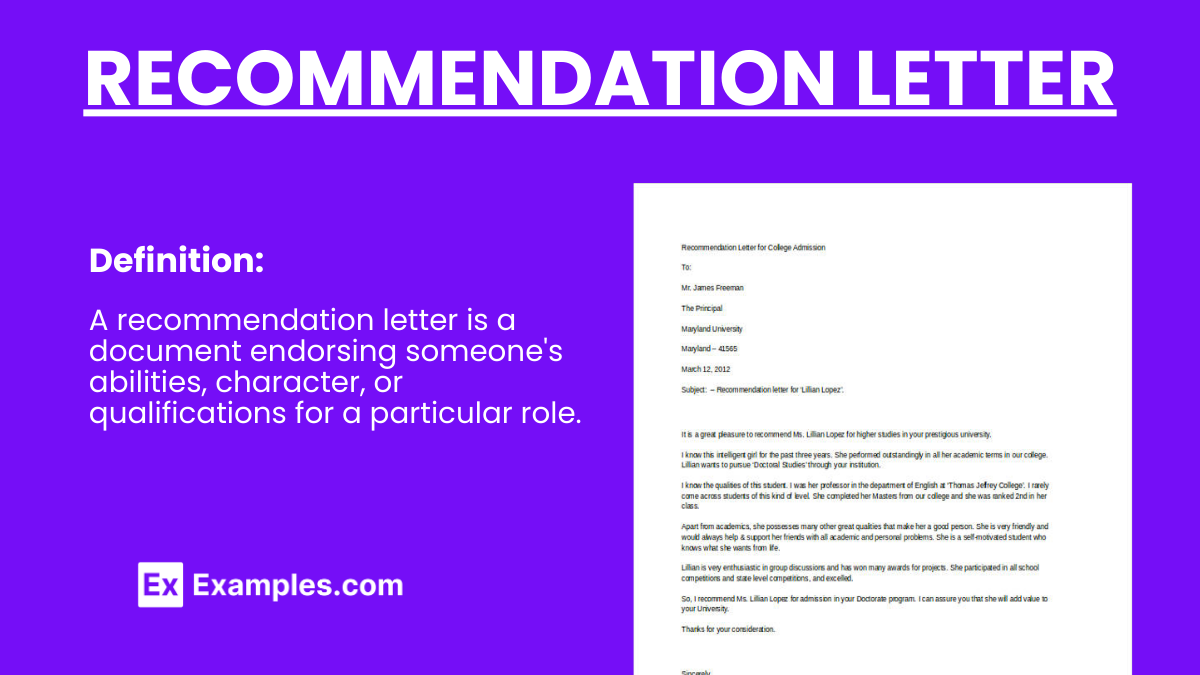
A recommendation letter is a document requested by an entity to know more information about an individual’s qualities and competencies. It can also be used to validate the items that a person has stated in his/her professional profile. There are a lot of purposes for a recommendation letter, but it is commonly needed in the field of academics and business.
These being said, a formal letter of recommendation is an assessment of an individual’s performance on various aspects which should be associated with the content of the candidate’s application letter. Keep in mind that this kind of letter is done by a reference who should have a professional relationship with the person to whom the specific letter is for.
What is Recommendation Letter?
A recommendation letter is a letter written by someone who knows you well, often a teacher, boss, or colleague, to say good things about your skills, character, and achievements. It’s used when you’re applying for a job, a scholarship, or college, to show others why you’re a great choice. This letter helps people who don’t know you yet understand what makes you special and why you would do well in the job or program you’re applying for. It’s like a stamp of approval from someone who trusts you and believes in your abilities.
Recommendation Letter Format
[Your Name]
[Your Title/Position]
[Your Company/Organization if applicable]
[Your Contact Information]
[Date][Recipient’s Name (if known)]
[Their Title/Position]
[Company/Organization Name]
[Company/Organization Address]Dear [Recipient’s Name or “To Whom It May Concern”],
Introduction
Start with a brief introduction of yourself, your professional relationship with the person you’re recommending, and the purpose of the letter. Mention how long you’ve known the person and in what capacity.
Body Paragraph(s)
First Paragraph: Provide an overview of the candidate’s key strengths, skills, and contributions. Highlight their role, responsibilities, and achievements while working with or under your supervision.
Second Paragraph: Go into more detail about specific qualities that make the individual stand out, such as their work ethic, leadership skills, academic prowess (if applicable), and personal character. Provide examples or anecdotes to illustrate these attributes.
Additional Paragraphs (if necessary): You can include information about the candidate’s personal qualities, how they interact with others, and their potential for future success in their new role or academic pursuit.
Conclusion
Conclude by summarizing the individual’s qualifications and reiterating your strong recommendation. Offer your belief in their suitability and potential for success in the position or program they are applying for.
Closing
End with a formal closing, such as “Sincerely,” or “Best regards,” followed by your signature (if sending a hard copy) and typed name.
[Your Signature (if applicable)]
[Your Typed Name]
[Your Position/Title]
[Your Contact Information (optional)]
Example of Recommendation Letter
Dr. John Smith
Professor of Mathematics
University of Hometown
123 College Lane
Education City, EC 45678
john.smith@unihometown.edu
(555) 123-4567
February 26, 2024Admissions Office
Dream University
789 Future Road
Academic City, AC 98765Dear Admissions Committee,
I am writing to wholeheartedly recommend Emily Johnson for admission to your undergraduate program at Dream University. As Emily’s mathematics teacher for the past two years at University of Hometown, I have been impressed by her exceptional analytical skills, dedication to learning, and leadership within the classroom.
Emily has consistently demonstrated a keen interest in mathematics, often going beyond the curriculum to explore complex concepts. Her ability to grasp difficult mathematical theories and apply them to solve real-world problems is remarkable. Notably, Emily led our school’s Math Club to a first-place victory at the National High School Math Challenge, showcasing her leadership skills and her ability to work effectively with a team.
Beyond her academic talents, Emily exhibits maturity, compassion, and perseverance. She has volunteered as a tutor for underprivileged students, demonstrating her commitment to using her knowledge to help others. Her empathy and dedication have made a significant impact on our community.
I am confident that Emily will bring the same enthusiasm, skill, and dedication to her studies at Dream University as she has shown here. She is a motivated student and a natural leader who is well-equipped to meet the challenges of a rigorous academic environment. Emily has my highest recommendation for admission to your esteemed program, as I believe she will be a valuable addition to your university community.
Please do not hesitate to contact me if you need further information or insights regarding Emily’s qualifications and character.
Sincerely,
[Signature, if sending a hard copy]
Dr. John Smith
Professor of Mathematics
University of Hometown
john.smith@unihometown.edu
(555) 123-4567
Free Download in Word Free Download in PDF
Letter of Recommendation for Student
[Your Name]
[Your Position]
[Your School/Institution]
[School/Institution Address]
[City, State, Zip Code]
[Your Email Address]
[Your Phone Number]
[Date][Recipient’s Name or “Admissions Committee”]
[Title/Position, if known]
[Institution/Company Name]
[Address]
[City, State, Zip Code]Dear [Recipient’s Name or “Admissions Committee”],
I am writing to wholeheartedly recommend [Student’s Name] for admission to [Program or University Name]. As [Your Position], I have had the pleasure of observing [Student’s First Name]’s remarkable academic journey and personal growth over the past [Number] years at [Your School/Institution].
[Student’s First Name] stands out as an exceptional student due to their [specific academic skills, e.g., analytical thinking, creative problem-solving], and unwavering dedication to excellence. Not only has [he/she/they] consistently ranked among the top [percentage] of [his/her/their] class, but [Student’s First Name] has also actively contributed to [specific examples, e.g., school projects, clubs, or community service].
Beyond [his/her/their] academic achievements, [Student’s First Name] possesses a maturity and sense of responsibility that sets [him/her/them] apart. [He/She/They] has demonstrated leadership qualities through [specific examples, such as leading a team project or serving in a student organization], showcasing [his/her/their] ability to inspire and collaborate with peers.
[Student’s First Name]’s commitment to [specific field or interest] is evident in [his/her/their] pursuit of knowledge and involvement in [related activities or projects]. [He/She/They] has expressed a genuine interest in [specific aspects of the program or field they are applying to], and I am confident that [he/she/they] will bring a unique perspective and enthusiastic inquiry to your program.
I strongly believe that [Student’s First Name] is well-prepared to meet the challenges presented by [the program or opportunity], and will make a valuable addition to your academic community. [His/Her/Their] passion, resilience, and commitment to making a meaningful impact are commendable, and I am excited to see the contributions [he/she/they] will make.
Please do not hesitate to contact me if you require further information or specific examples of [Student’s First Name]’s work and achievements. I am eager to provide any assistance that will help you in your decision-making process.
Thank you for considering this recommendation.
Sincerely,
[Your Signature, if sending a hard copy]
[Your Typed Name]
[Your Position]
[Your Contact Information]
Free Download in Word Free Download in PDF
Recommendation Letter for Employee
[Your Name]
[Your Position]
[Your Company]
[Company Address]
[City, State, Zip Code]
[Your Email Address]
[Your Phone Number]
[Date][Recipient’s Name or “Hiring Manager”]
[Recipient’s Position, if known]
[Company/Organization Name]
[Address]
[City, State, Zip Code]Dear [Recipient’s Name or “Hiring Manager”],
I am delighted to write this letter of recommendation for [Employee’s Name], who has worked under my supervision as [Employee’s Position] at [Your Company] for [Duration of Employment]. [Employee’s First Name]’s exceptional skills and unwavering dedication have been invaluable to our team.
During [his/her/their] tenure with us, [Employee’s First Name] has consistently demonstrated an excellent ability in [specific skills or areas, e.g., project management, customer service]. [He/She/They] has played a key role in [specific projects or achievements], showcasing [his/her/their] ability to [describe abilities, such as solve complex problems, improve processes, lead teams].
[Employee’s First Name] is not only skilled in [his/her/their] technical abilities but also excels in soft skills. [He/She/They] has remarkable communication skills, both with clients and within our team, fostering a collaborative and positive work environment. [His/Her/Their] leadership and ability to motivate others have contributed significantly to our team’s success.
One of [Employee’s First Name]’s most notable contributions was [describe a significant contribution or project], which resulted in [describe the outcome, such as increased sales, improved efficiency, customer satisfaction]. This achievement is a testament to [his/her/their] hard work, strategic thinking, and commitment to excellence.
[Employee’s First Name] is a self-motivated individual who is always eager to learn and take on new challenges. [His/Her/Their] positive attitude and adaptability make [him/her/them] a valuable asset to any team. I have no doubt that [Employee’s First Name] will bring the same level of dedication and exceptional performance to [his/her/their] future endeavors.
Please feel free to contact me at [Your Phone Number] or [Your Email Address] if you need further information or to discuss [Employee’s First Name]’s qualifications and achievements in more detail. I am confident that [Employee’s First Name] would be a great addition to your team and has my highest recommendation.
Sincerely,
[Your Signature, if sending a hard copy]
[Your Typed Name]
[Your Position]
Free Download in Word Free Download in PDF
Letter of Recommendation Example Template
Offer Letter of Recommendation Example Template

Refusal of Request for Letter of Recommendation Example Template

Verification of Employment and Letter of Recommendation Example Template

Confirmation of Employment and Letter of Recommendation Example Template

Restaurant Employee Personal Recommendation Letter Example Template

A Tactful Way to Decline to Write a Letter of Recommendation Example Template

Free Recommendation Letter Format

Simple Recommendation Letter Template

Sample Recommendation Letter Template

Professional Recommendation Letter Template

MBA Recommendation Letter From Employer Template

College Recommendation Letter from family friend Template

College Recommendation Letter from Employer Template

Sample Recommendation Letter for Student

Recommendation Letter Template for Scholarship

Recommendation Letter for Scholarship from Family Friend Template

MBA Recommendation Letter Template

Recommendation Letter for a Teacher Template

Leadership Recommendation Letter for Student Template

Recommendation Letter for Student From Teacher Template

College Recommendation Letter Form a Friend Template

Community Service Recommendation Letter Template

Recommendation Letter for College Template

Recommendation Letter for Student Scholarship Template

Professor Recommendation Letter Template

College Recommendation Letters
College Admission Recommendation Letter
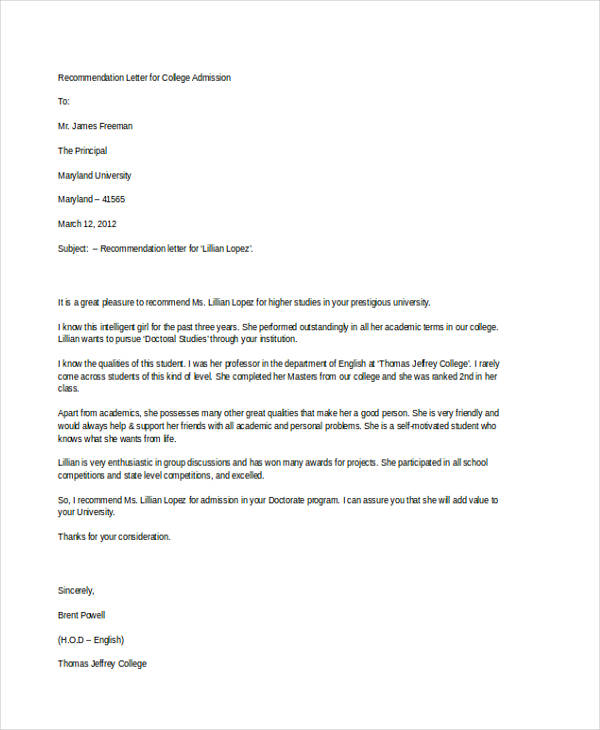
foundletters.com
College Scholarship Recommendation Letter
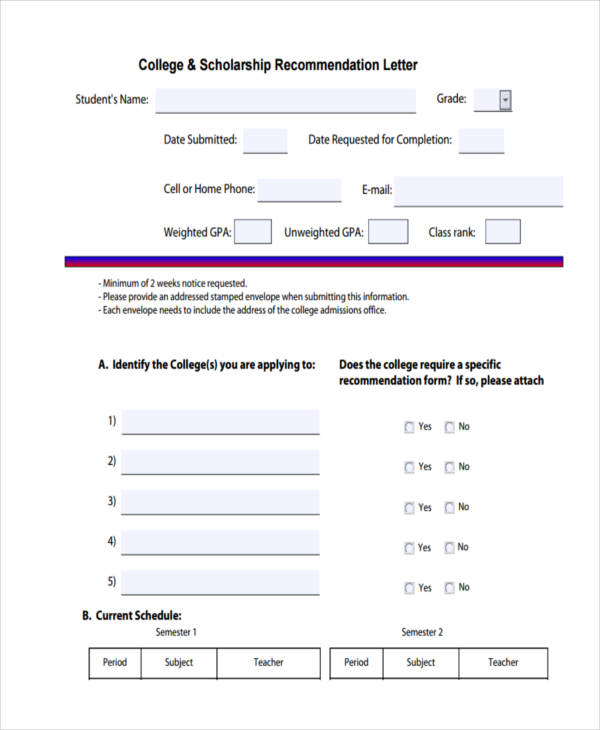
ocps.net
College Personal Recommendation Letter
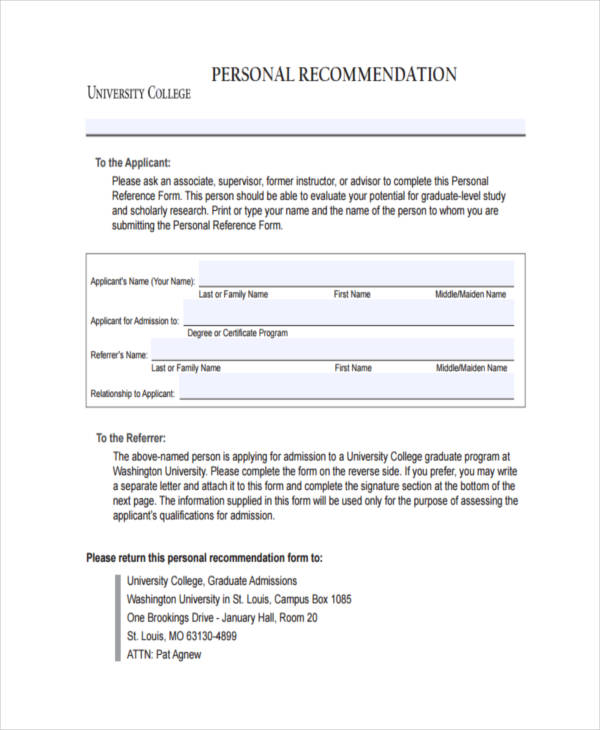
ucollege.wustl.edu
Personal Recommendation Letter Examples
Personal Character Recommendation Letter
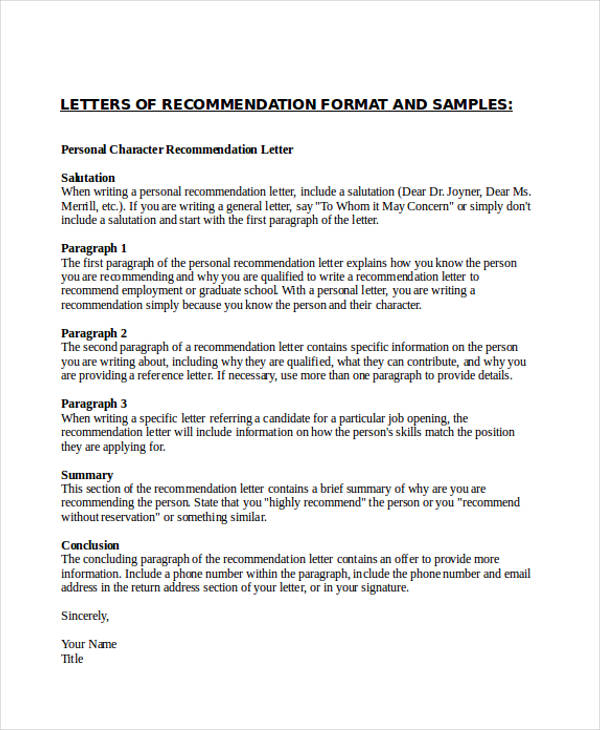
1writeforthegrant.net
Professional Recommendation Letters
Professional Services Recommendation Letter
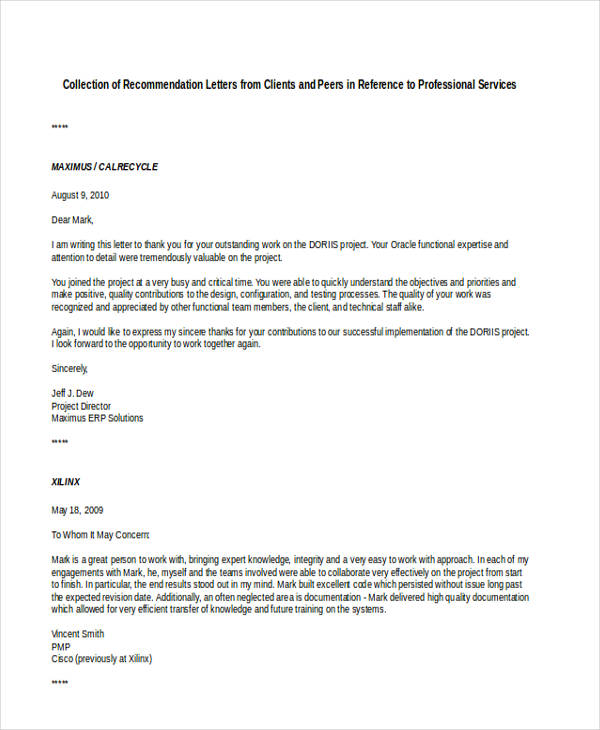
vitalita.com
Professional Job Recommendation Letter
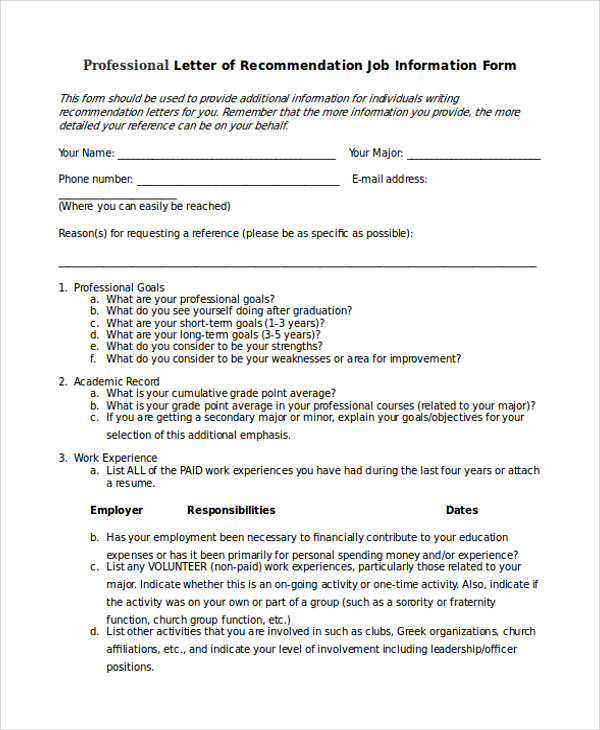
uwsp.edu
Professional Engineer Recommendation Letter
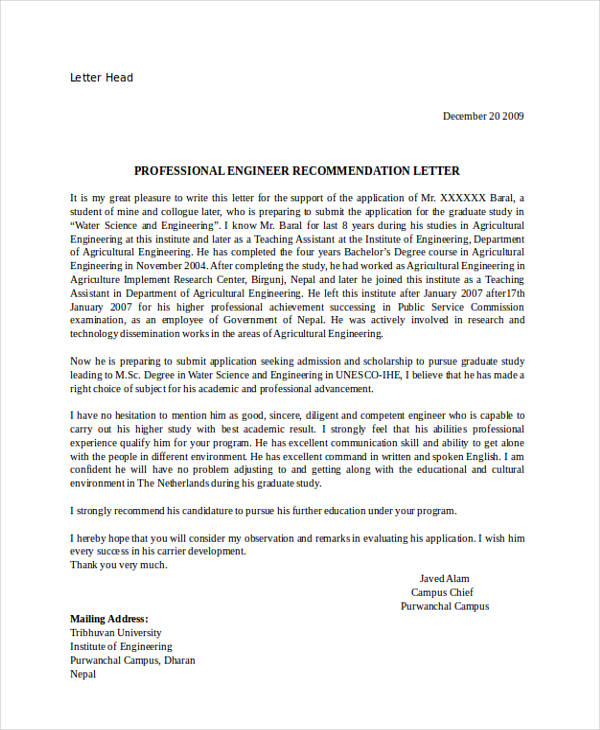
academic.edu.np
Academic Recommendation Letters
Academic Reference Recommendation Letter
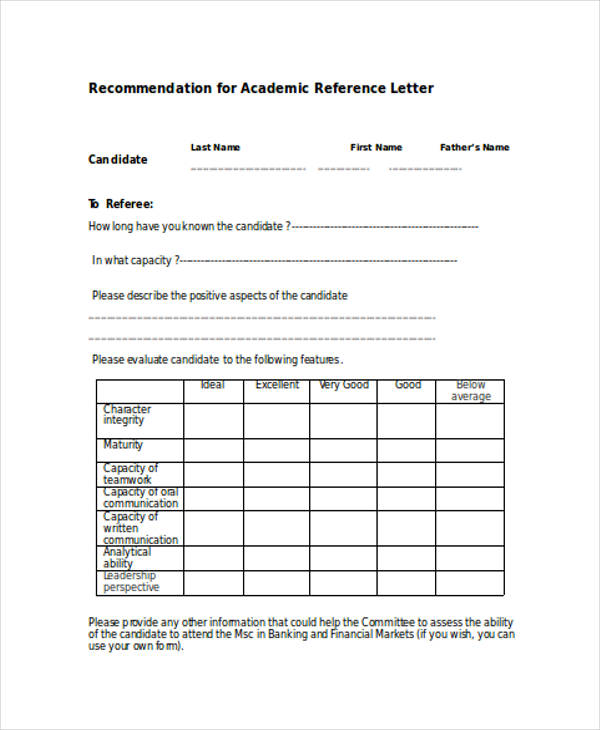
web.xrh.unipi.gr
Academic Performance Recommendation Letter
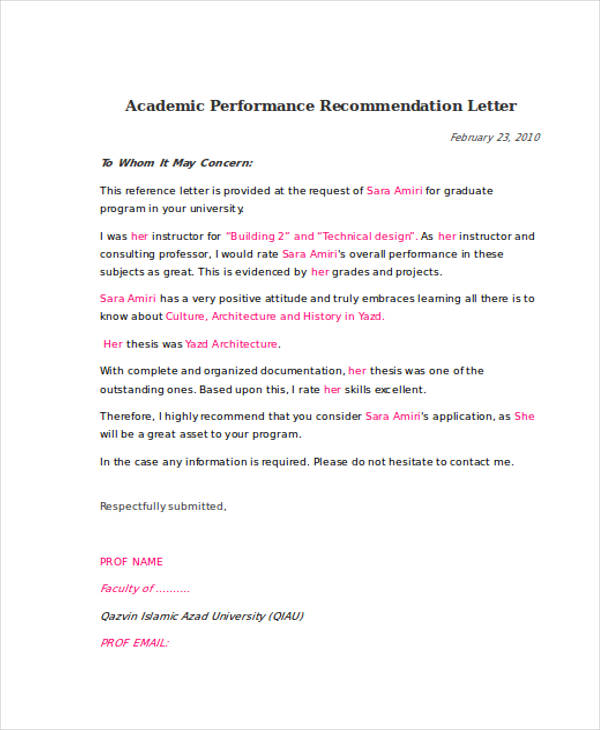
qiau.ac.ir
Academic Advisor Recommendation Letter
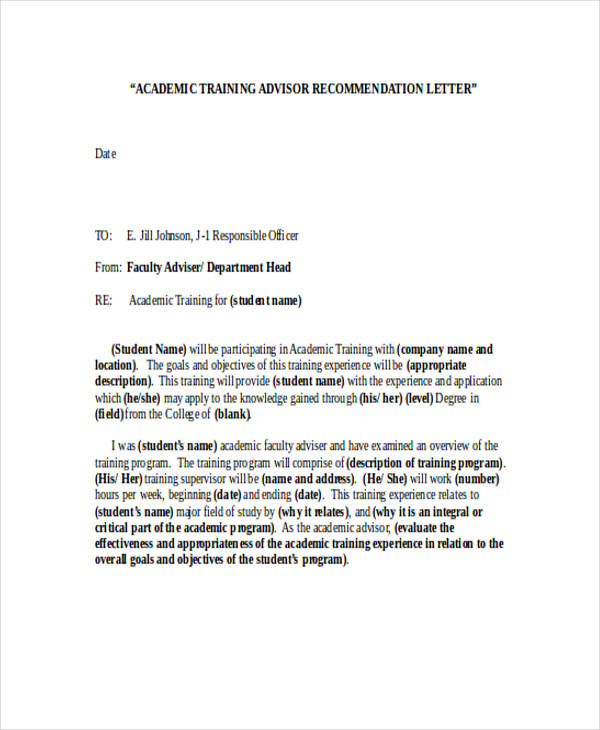
uwyo.edu
Academic Promotion Recommendation Letter
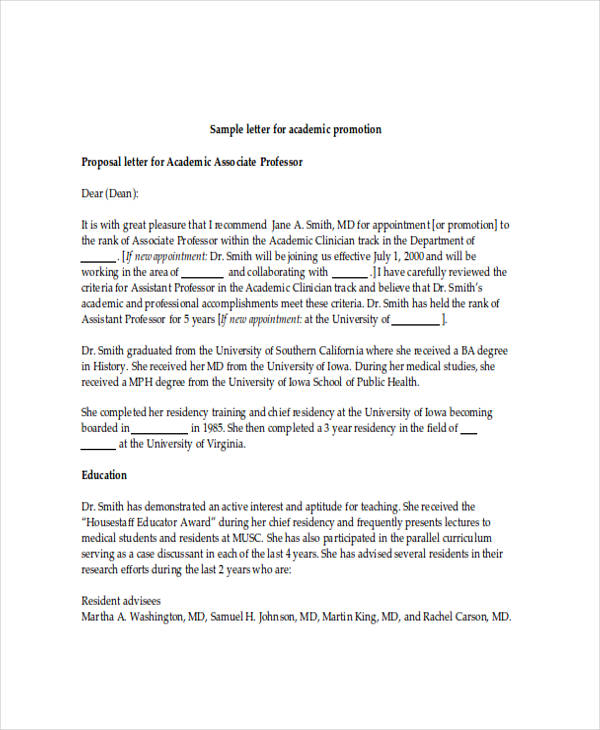
academicdepartments.musc.edu
Business Recommendation Letter Examples
Business Partner Recommendation Letter Example
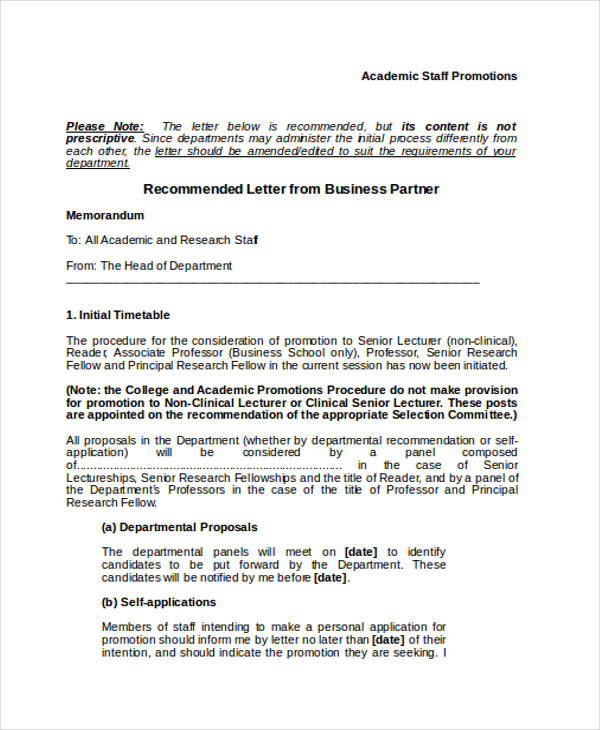
imperial.ac.uk
Business Analyst Recommendation Letter
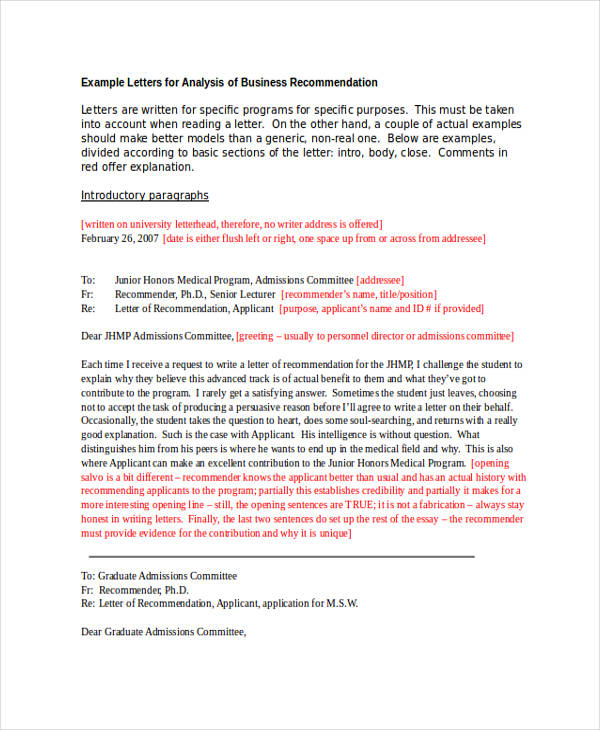
users.clas.ufl.edu
Business Services Recommendation Letter
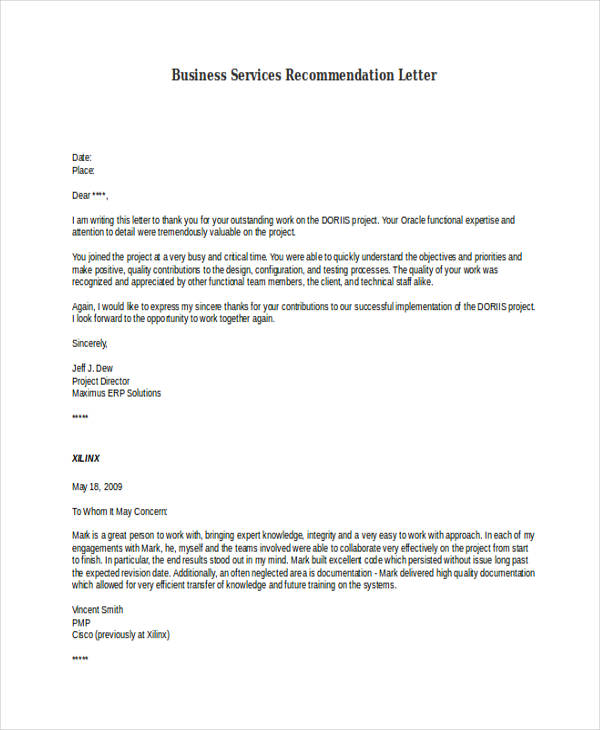
vitalita.com
Business Client Recommendation Letter

the-writing-center.com
Business Associate Recommendation Letter
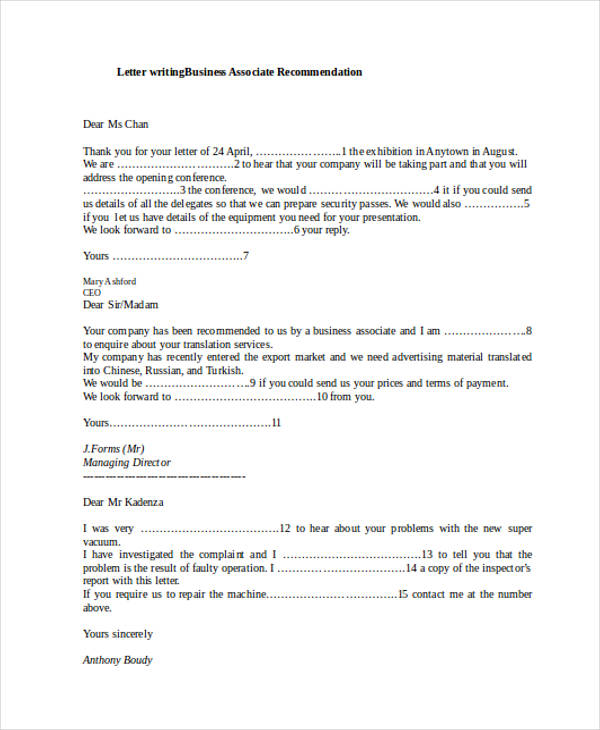
ekool.tktk.ee
Basic Recommendation Letters
Basic High School Recommendation Letter
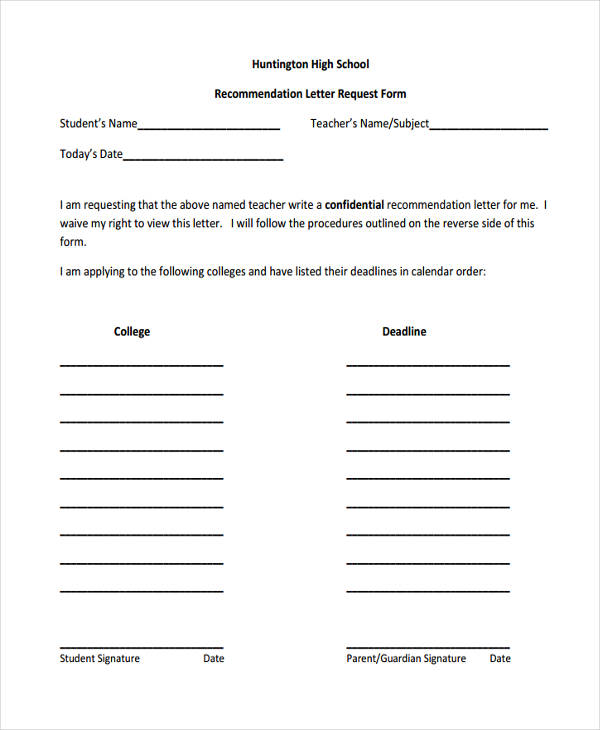
hufsd.edu
Basic Employment Recommendation Letter
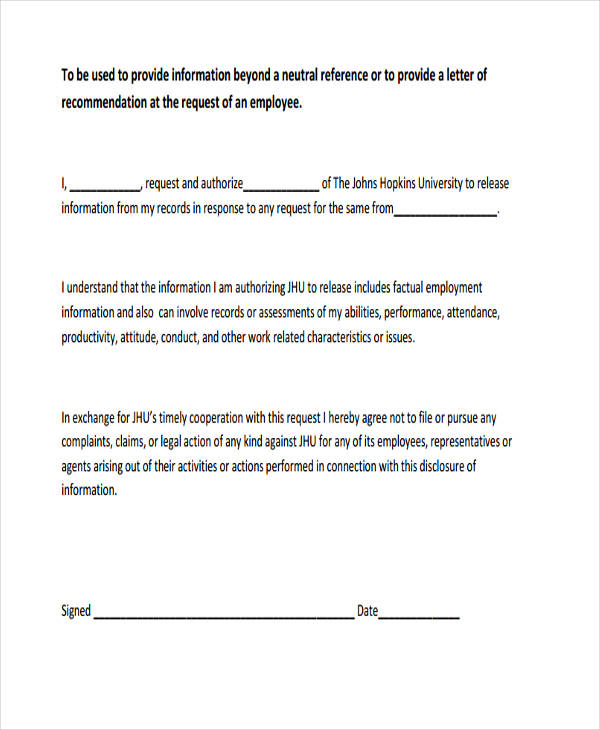
hrnt.jhu.edu
Basic College Recommendation Letter
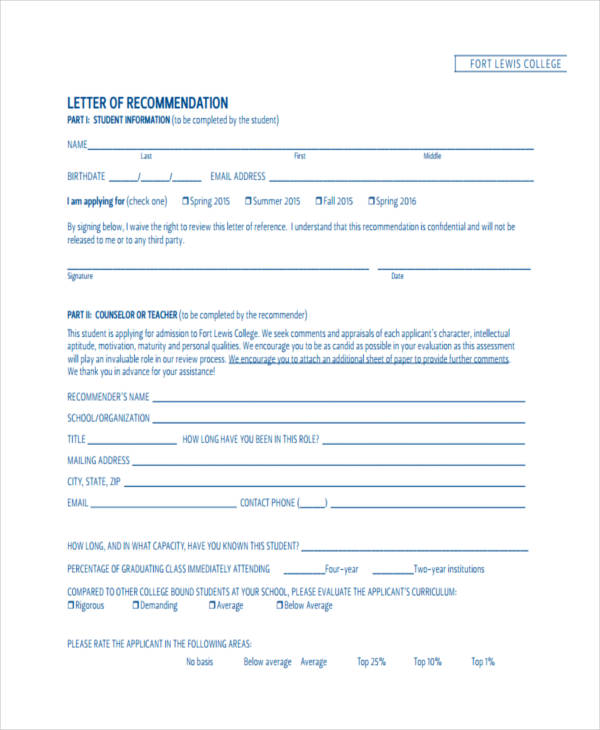
fortlewis.edu
Basic Scholarship Recommendation Letter
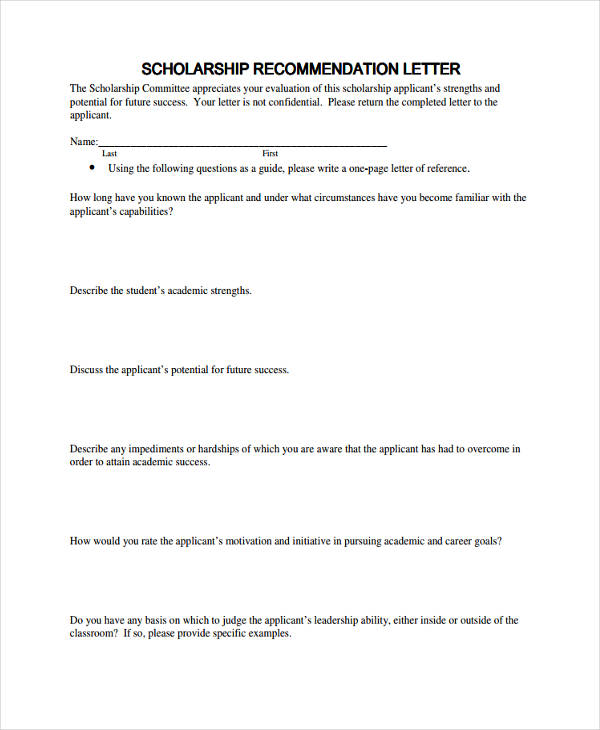
manawaschools.org
Bank Recommendation Letters
Request for Bank Recommendation Letter
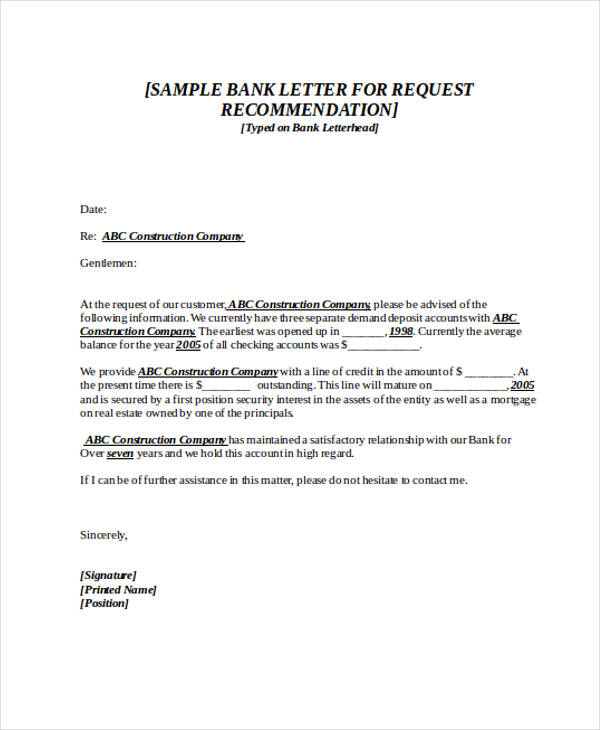
masurety.com
Bank Loan Recommendation Letter
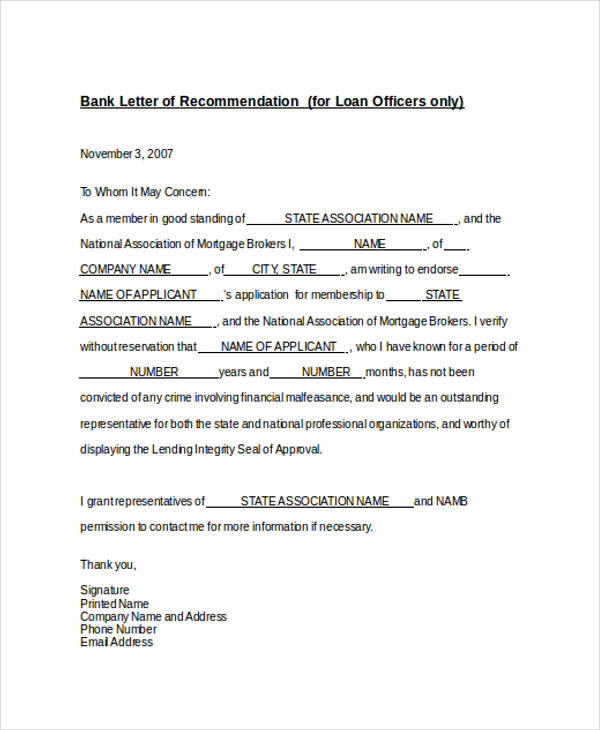
namb.org
Company Recommendation Letters
Company Services Recommendation Letter
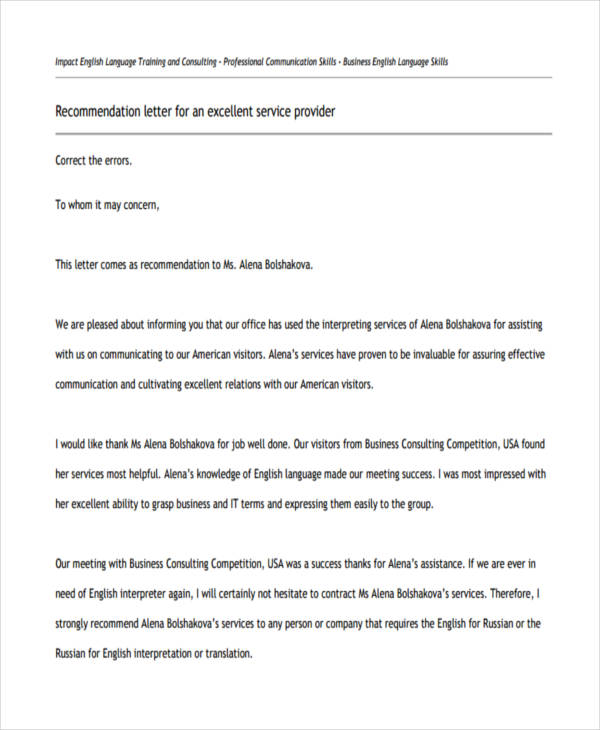
englishwithimpact.com
Company Business Recommendation Letter
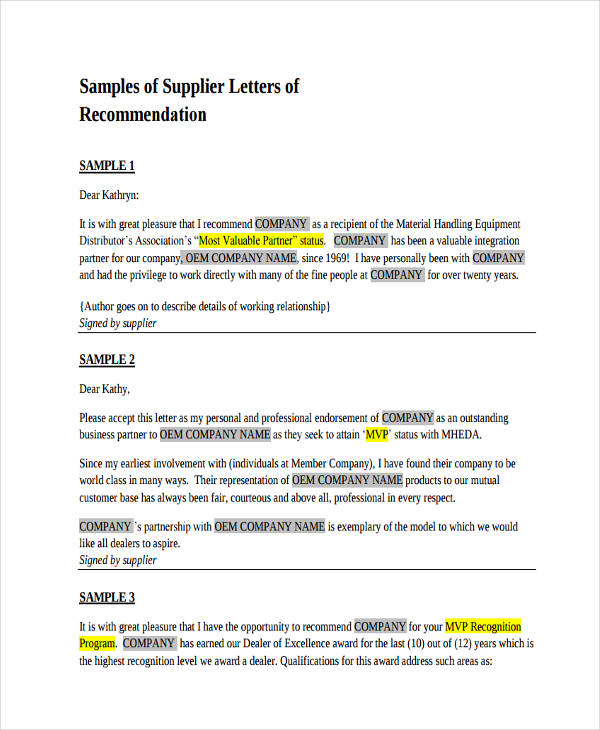
mheda.org
Cleaning Company Recommendation Letter

juanycleaningservice.com
Security Company Recommendation Letter
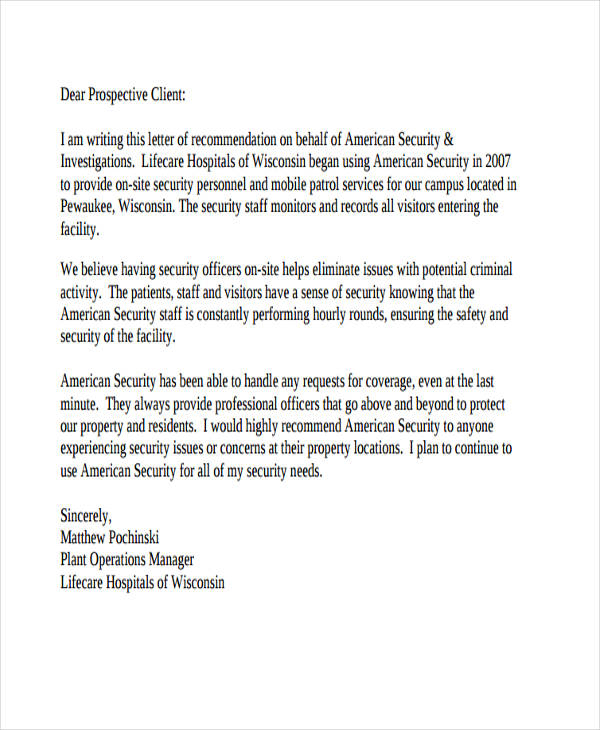
americansecuritycorp.com
Church Recommendation Letters
Free Church Recommendation Letter
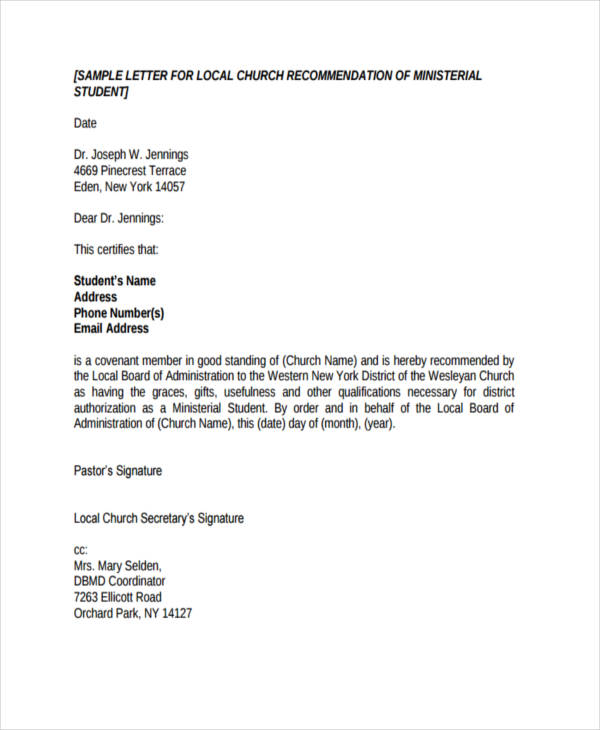
wnydistrict.com
Church Volunteer Recommendation Letter
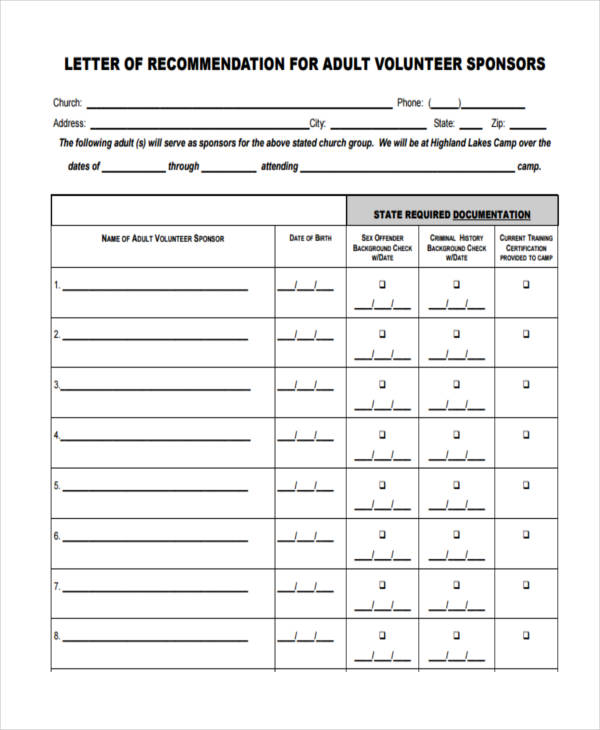
hlccc.org
Church Scholarship Recommendation Letter
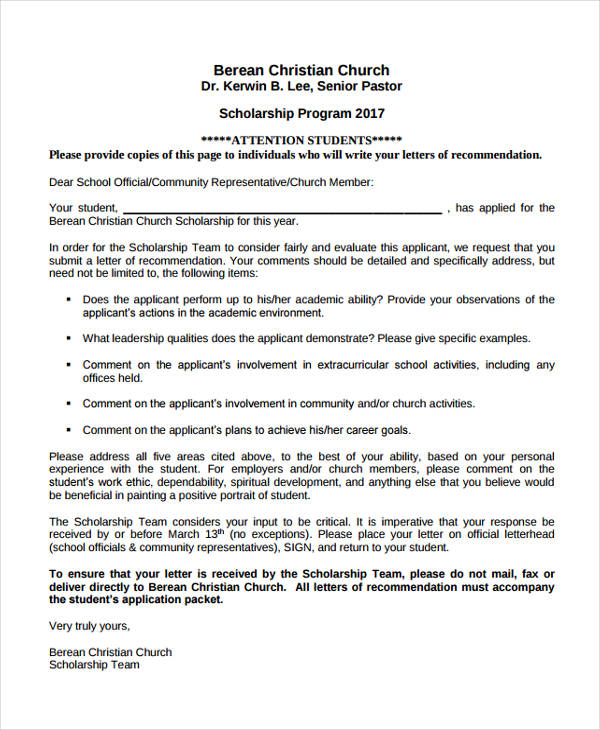
bereanchristianchurch.org
Doctor Recommendation Letters
Hospital Doctor Recommendation Letter
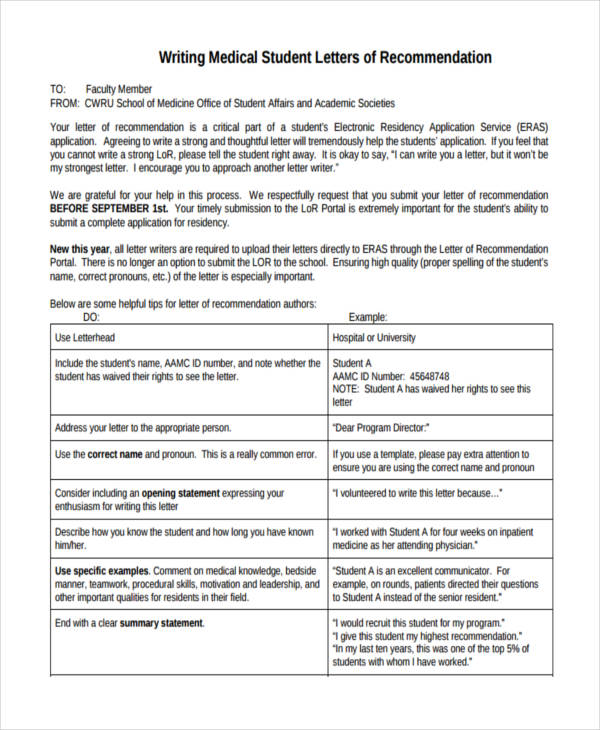
casemed.case.edu
Doctor Recommendation Letter for Patient
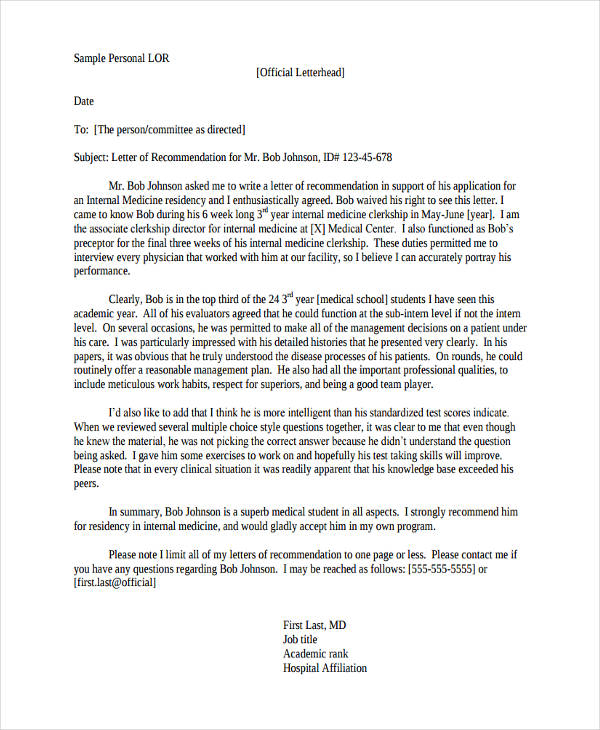
sgim.org
Family Doctor Recommendation Letter
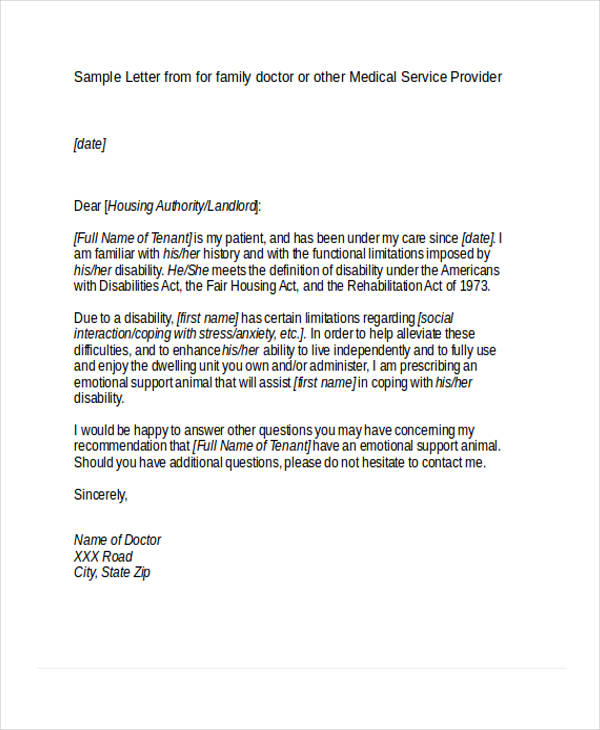
drcnh.org
Employee Recommendation Letters
Employee Termination Recommendation Letter
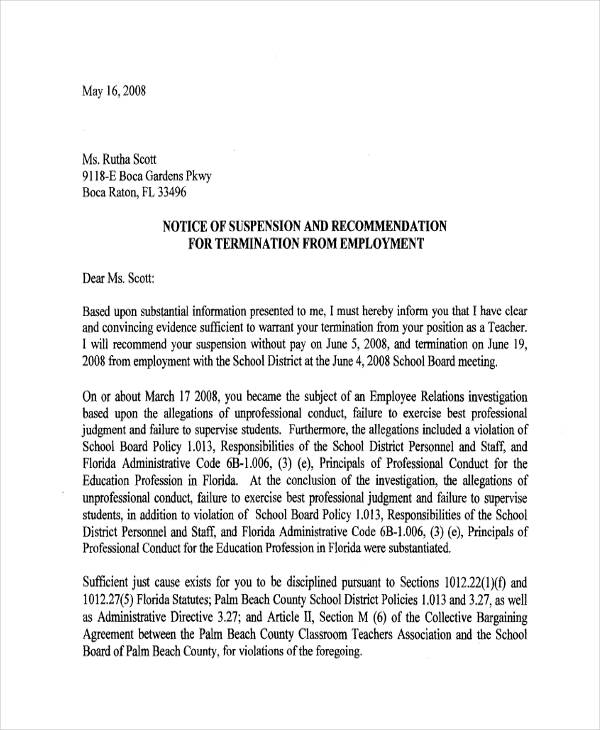
palmbeach.k12.fl.us
Employee Promotion Recommendation Letter
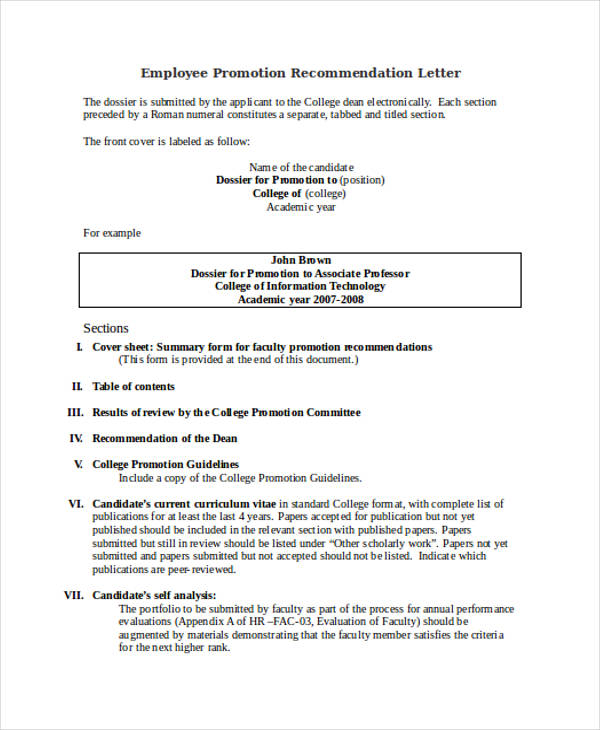
education.gpg.gov.za
Employee Transfer Recommendation Letter
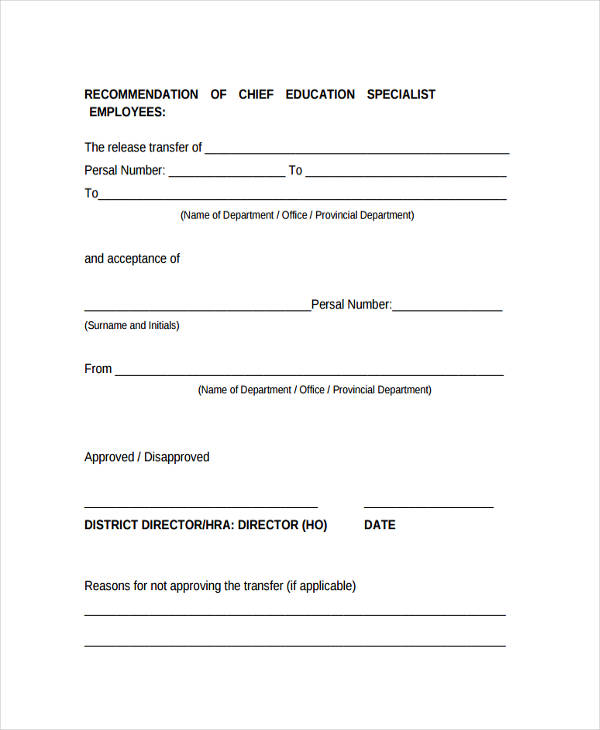
education.gpg.gov.za
Free Recommendation Letters
Free Personal Recommendation Letter
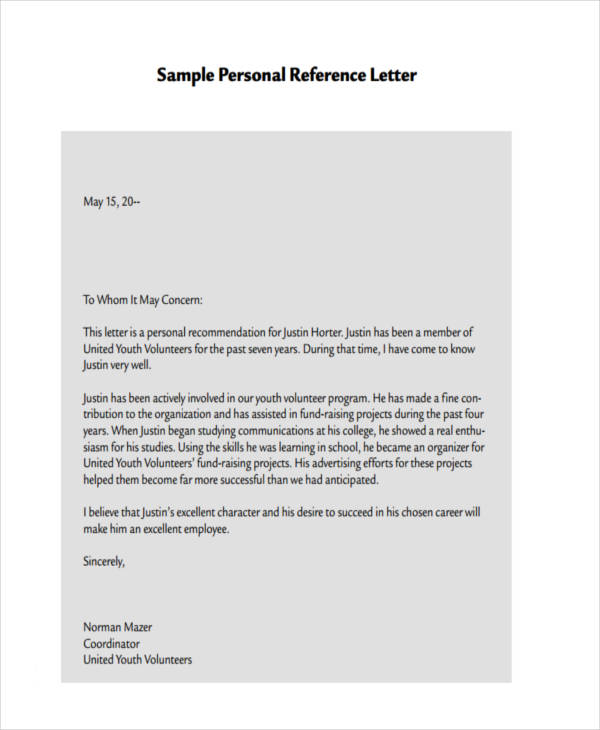
glencoe.com
Free Employment Recommendation Letter
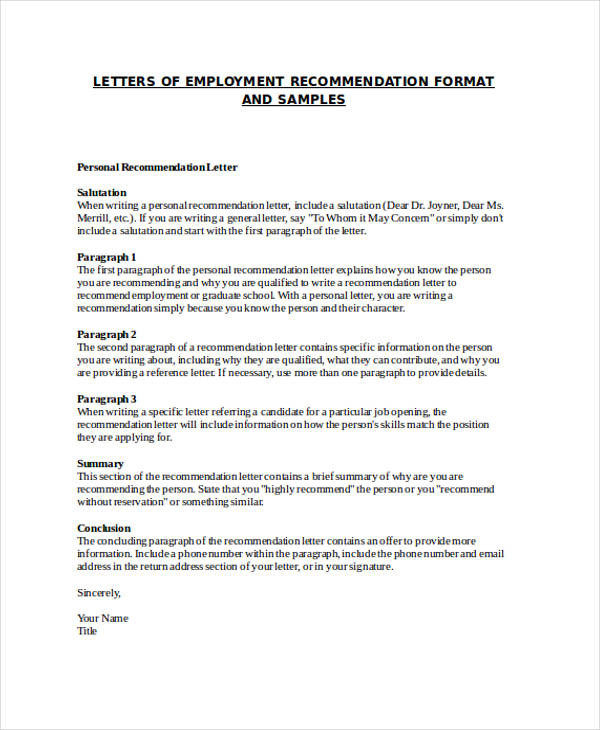
1writeforthegrant.net
Free Recommendation Letter for Job
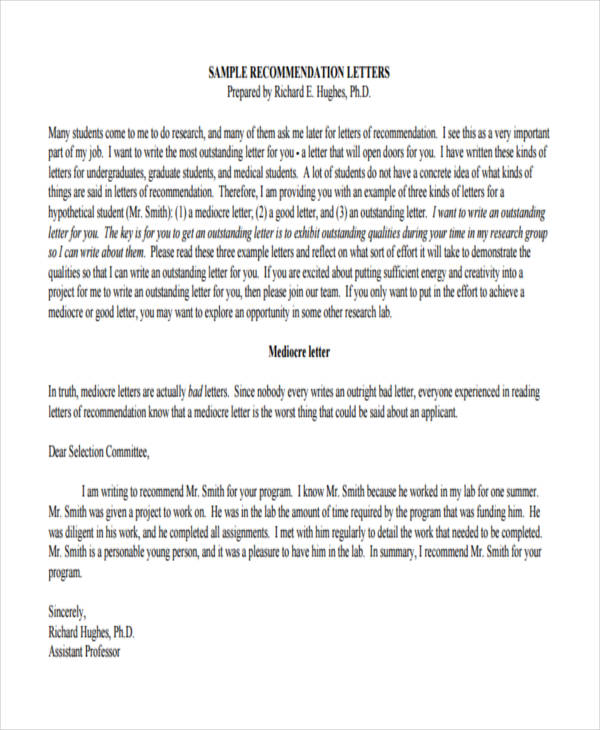
verimag.imag.fr
Free Recommendation Letter for Student
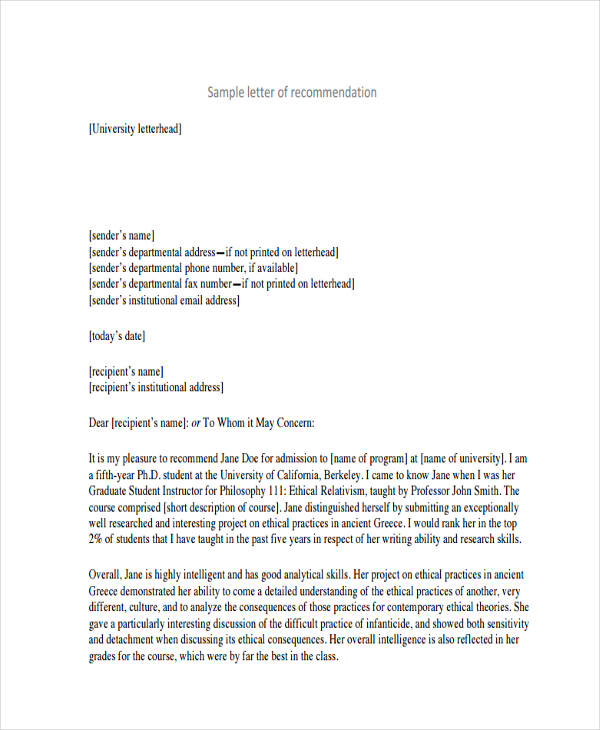
gsi.berkeley.edu
General Recommendation Letters
General Surgery Recommendation Letter Sample
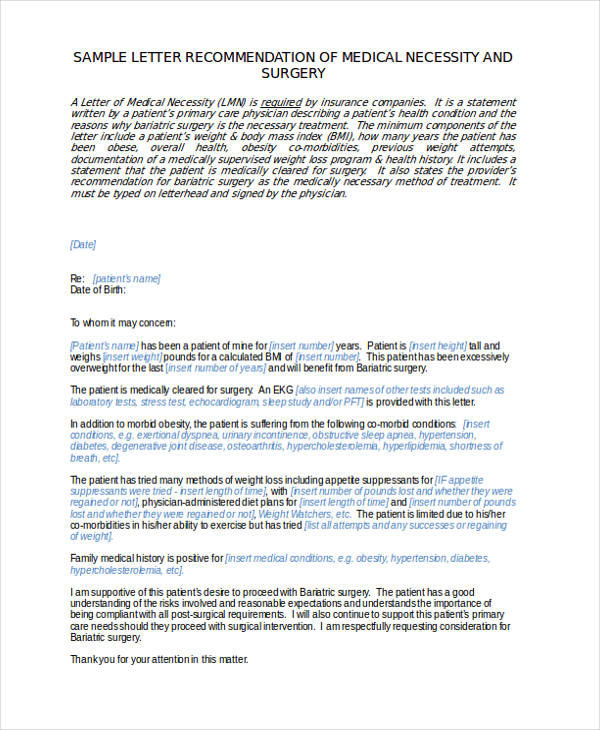
pdfbook.cash
General Contractor Recommendation Letter
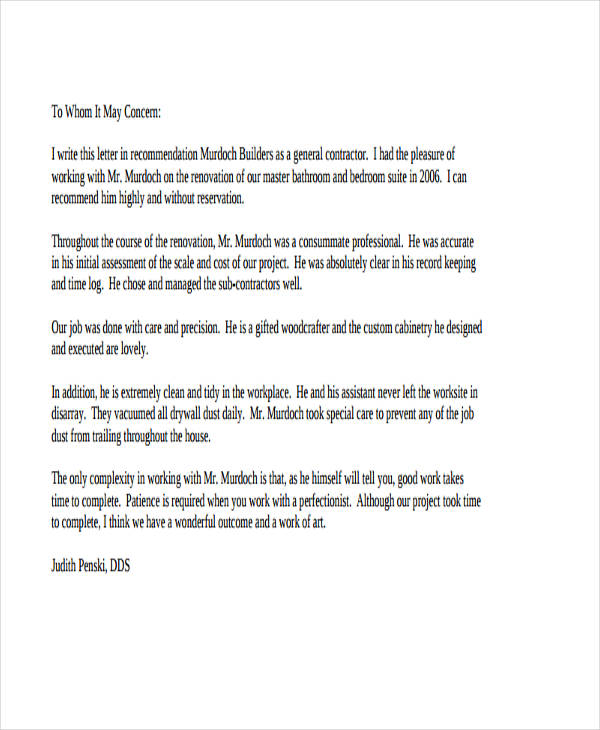
murdochbuilders.com
General Manager Recommendation Letter
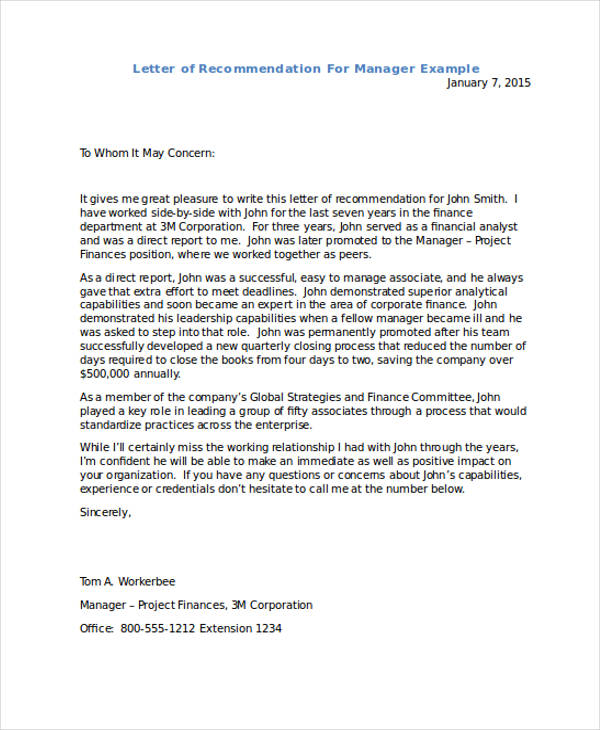
money-zine.com
General Teacher Recommendation Letter

cie-dfw.org
Internship Recommendation Letters
Employer Internship Recommendation Letter

baruch.cuny.edu
Student Internship Recommendation Letter
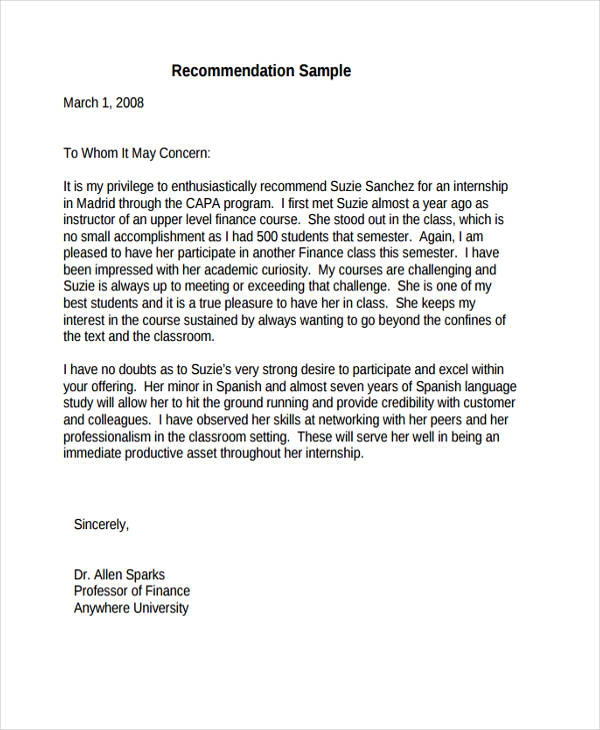
samford.studioabroad.com
Engineering Internship Recommendation Letter
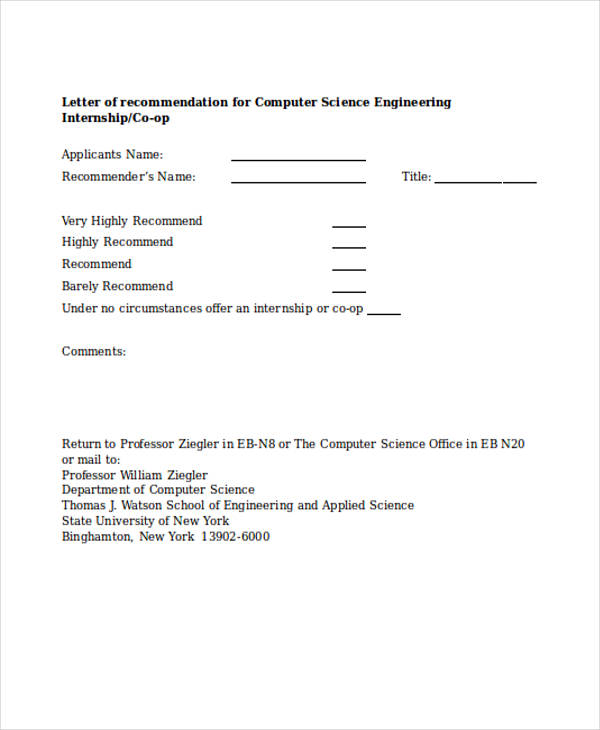
cs.binghamton.edu
Job Recommendation Letter Examples
Manager Job Recommendation Letter
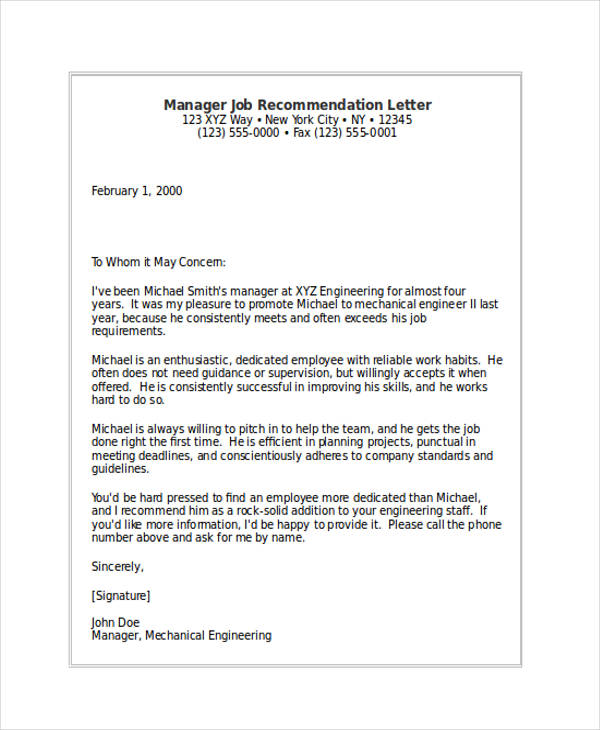
yourmomhatesthis.com
Job Reference Recommendation Letter
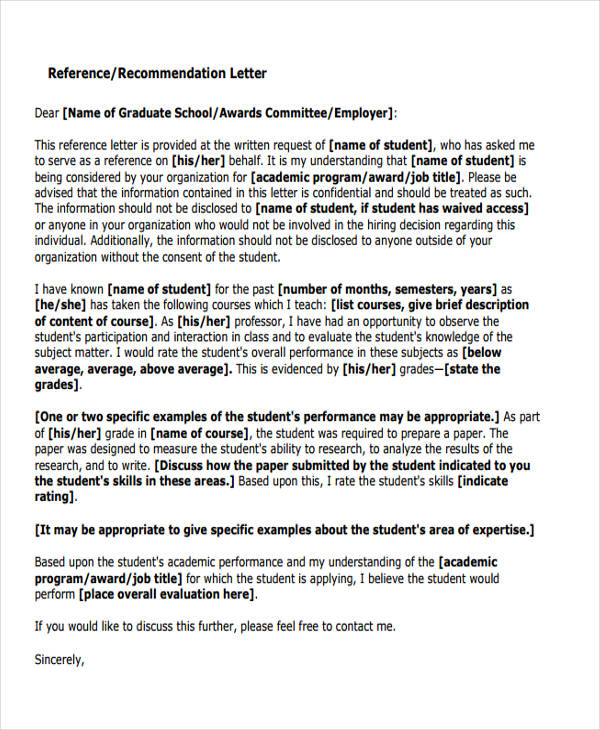
clemson.edu
Job Self Recommendation Letter
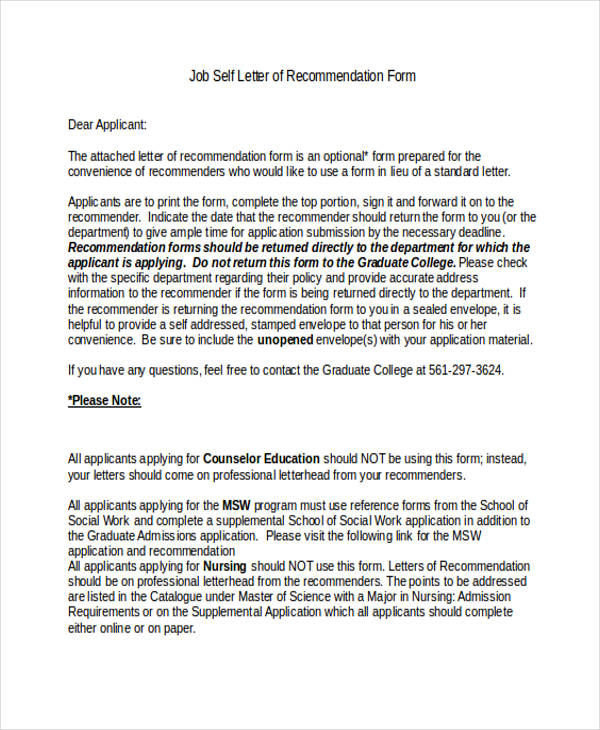
fau.edu
Job Application Recommendation Letter
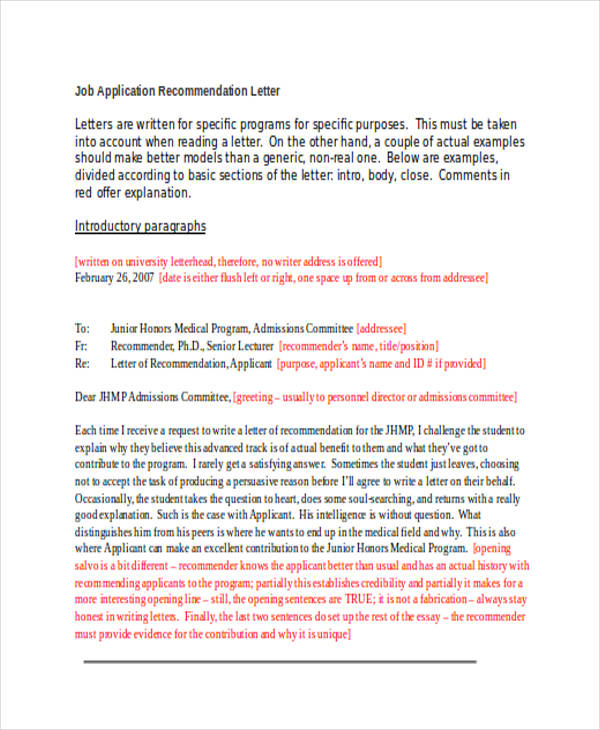
users.clas.ufl.edu
Landlord Recommendation Letters
Free Landlord Recommendation Letter
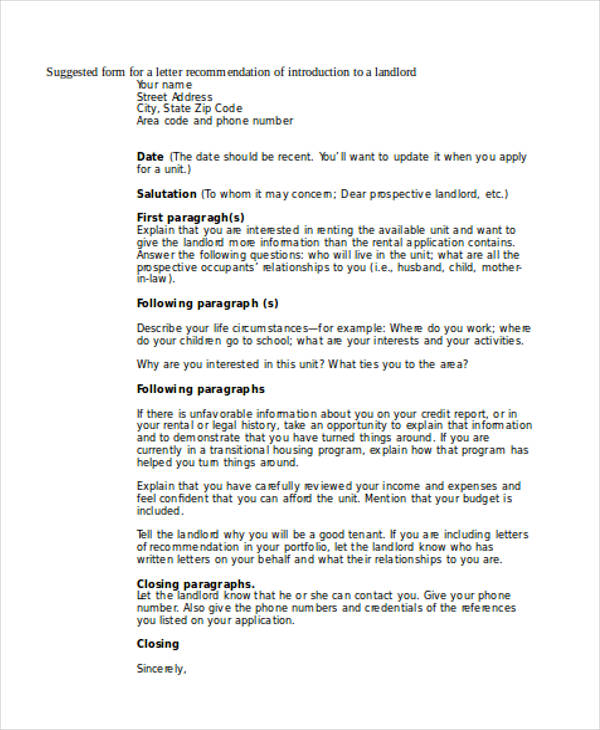
rentrightclass.wikispaces.com
Landlord Recommendation Letter
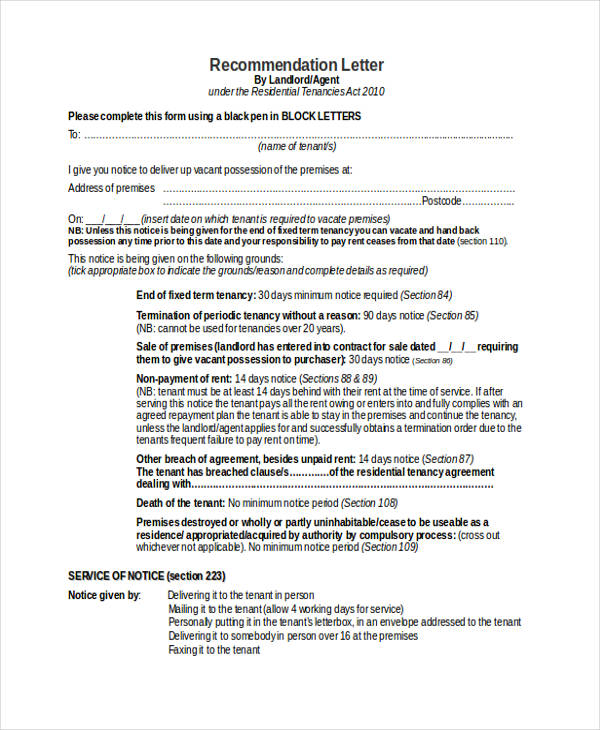
fairtrading.nsw.gov.au
Medical Recommendation Letters
Medical Assistant Recommendation Letter
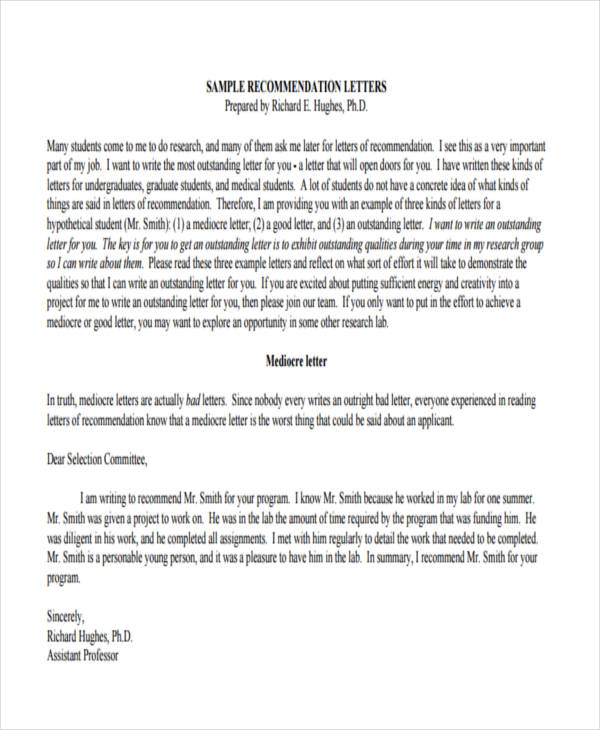
verimag.imag.fr
Medical Student Recommendation Letter

med.ucf.edu
Medical Residency Recommendation Letter

xa.yimg.com
Medical School Recommendation Letter
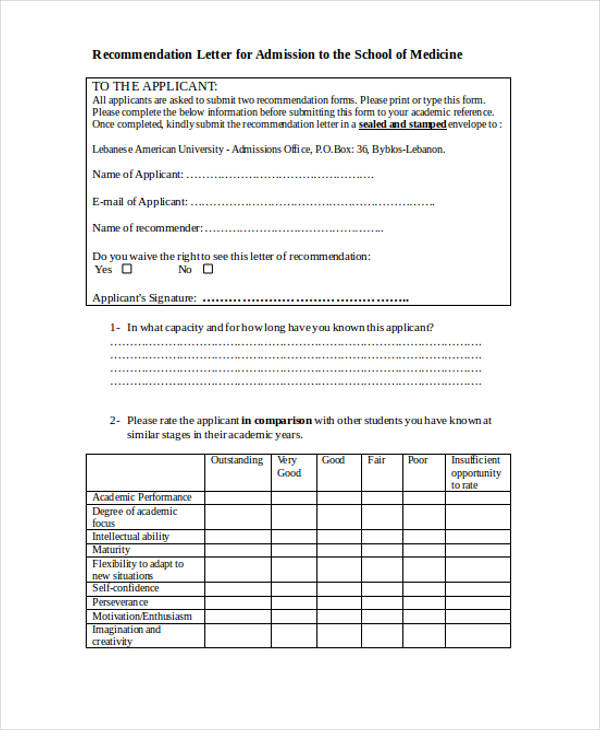
medicine.lau.edu.lb
Nursing Recommendation Letter Samples
Hospital Nursing Recommendation Letter
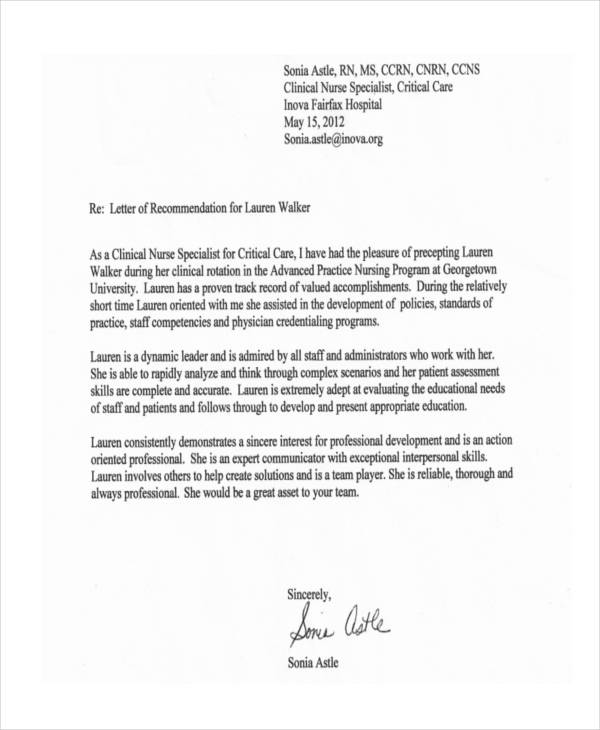
blogs.commons.georgetown.edu
Professional Nursing Recommendation Letter
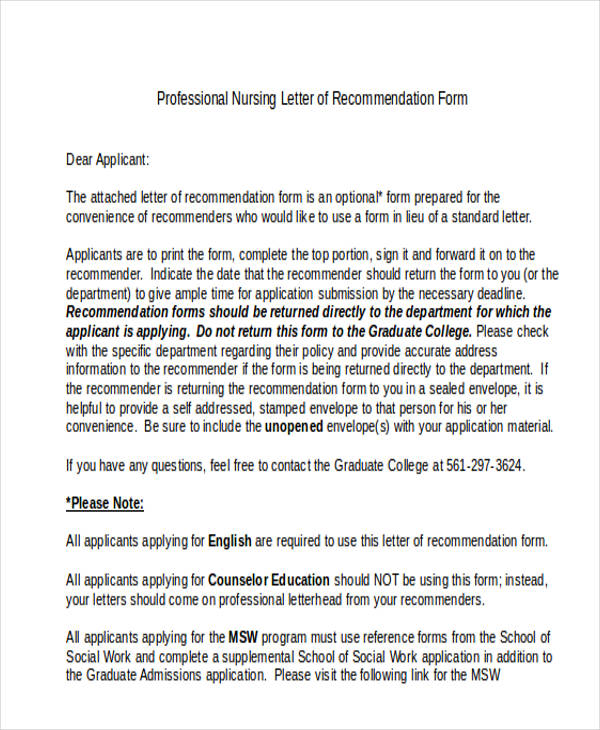
fau.edu
Nursing Student Recommendation Letter
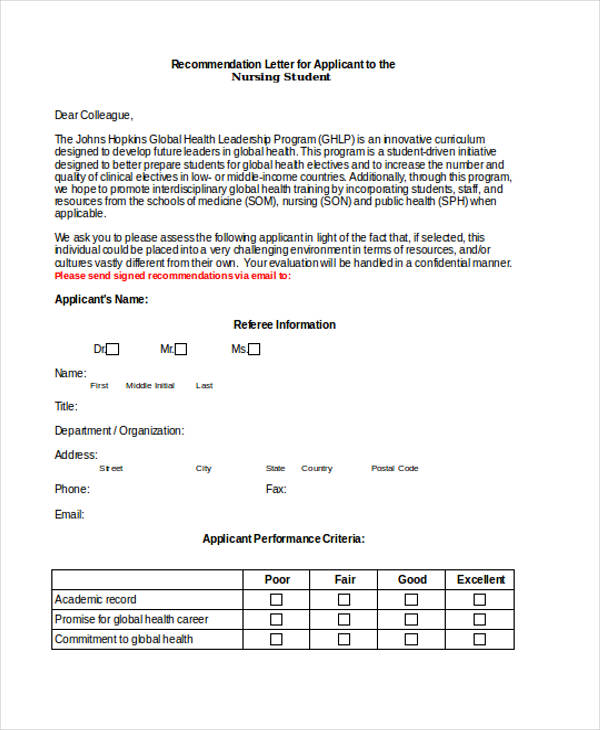
hopkinsmedicine.org
Nursing Scholarship Recommendation Letter
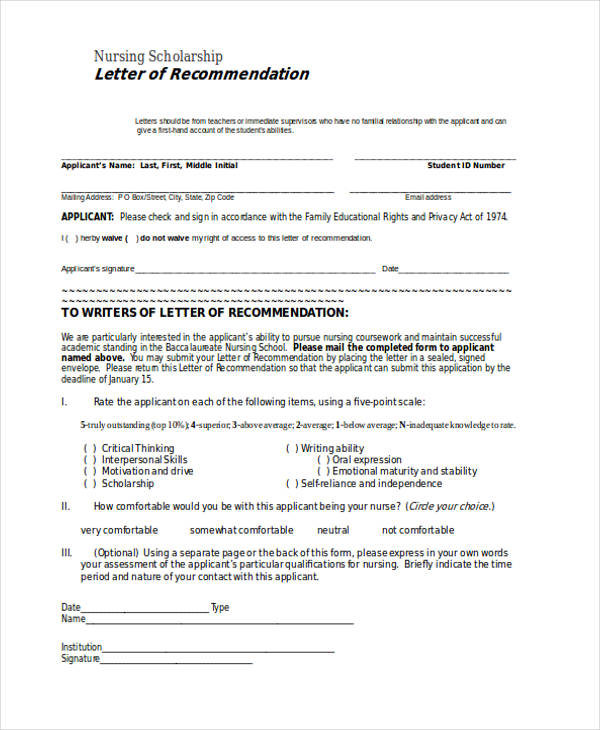
hilo.hawaii.edu
Rental Recommendation Letter
Rental Property Recommendation Letter
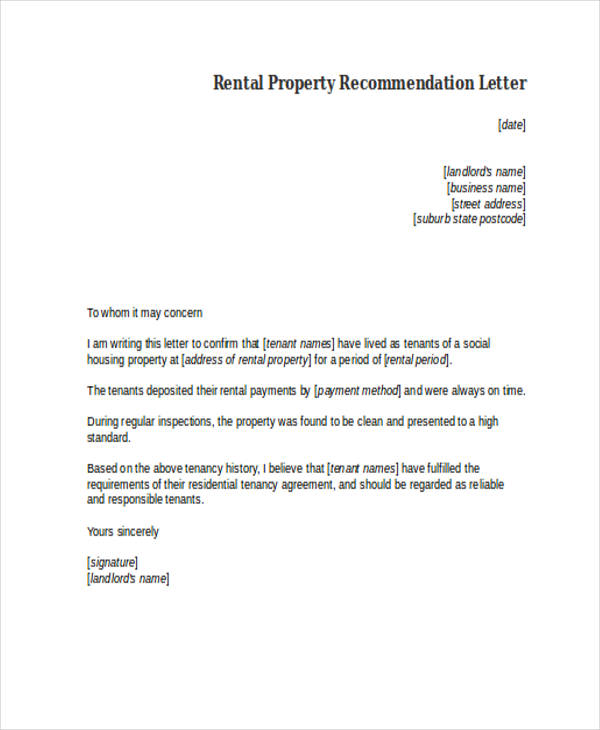
hpw.qld.gov.au
Rental Application Recommendation Letter
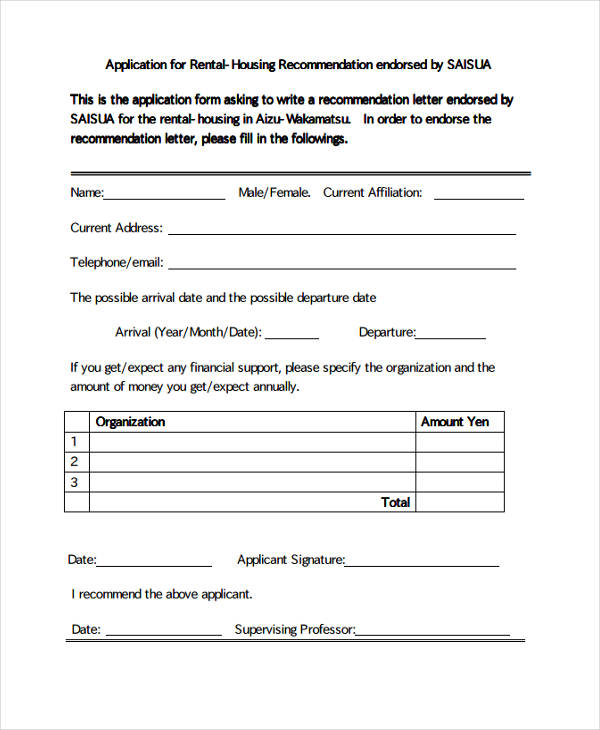
web-ext.u-aizu.ac.jp
Apartment Rental Recommendation Letter
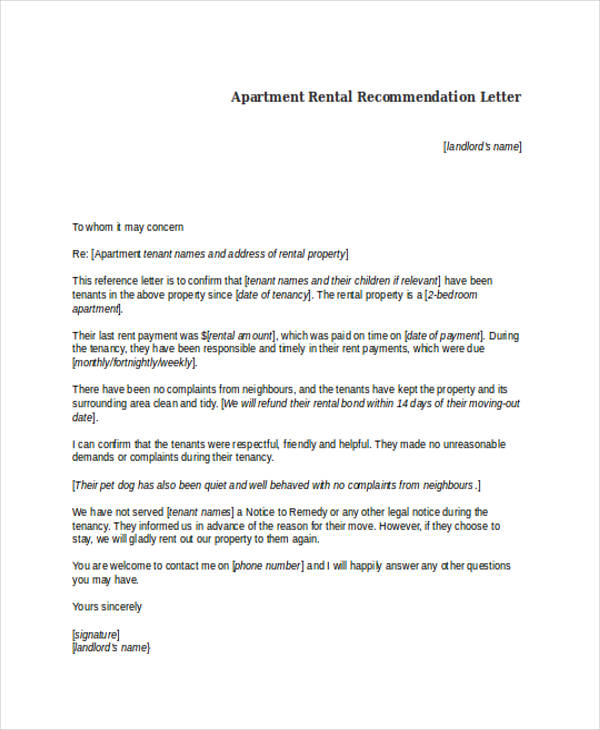
hpw.qld.gov.au
Reference Recommendation Letters
Employer Reference Recommendation Letter
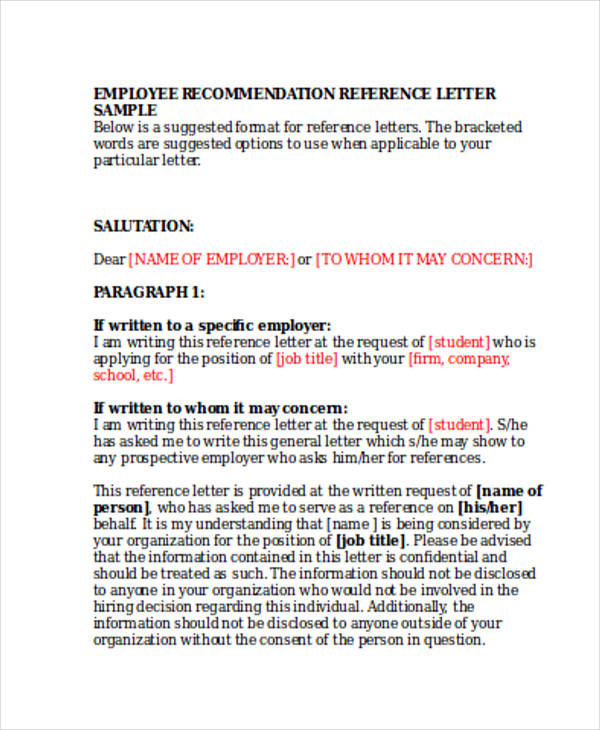
bradfordvts.co.uk
Free Academic Reference Recommendation Letter
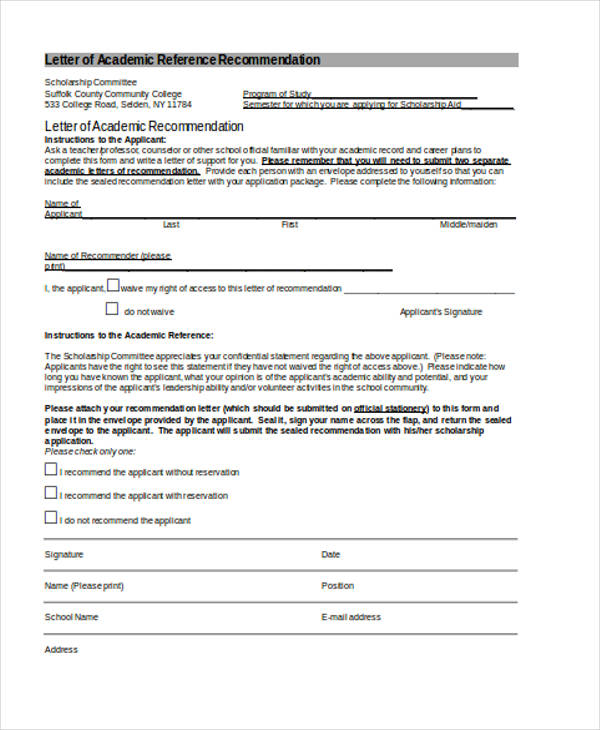
department.sunysuffolk.edu
Character Reference Recommendation Letter
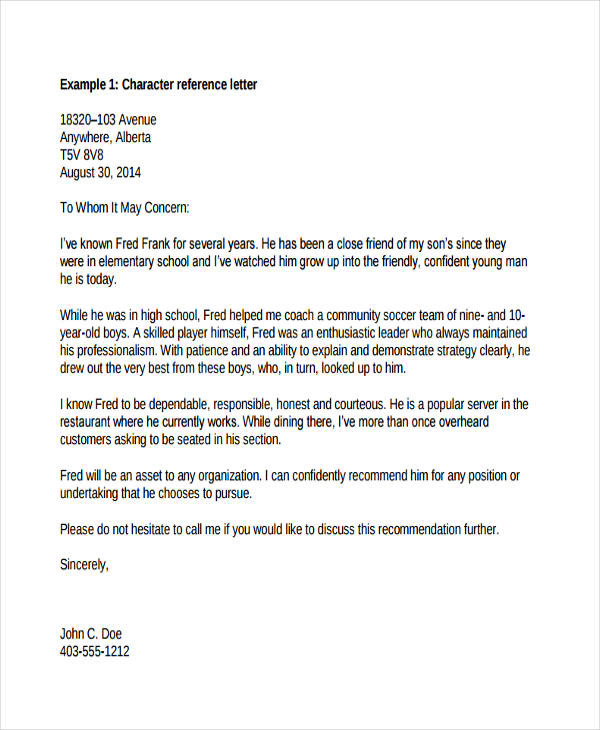
alis.alberta.ca
Scholarship Recommendation Letters
Free Scholarship Recommendation Letter
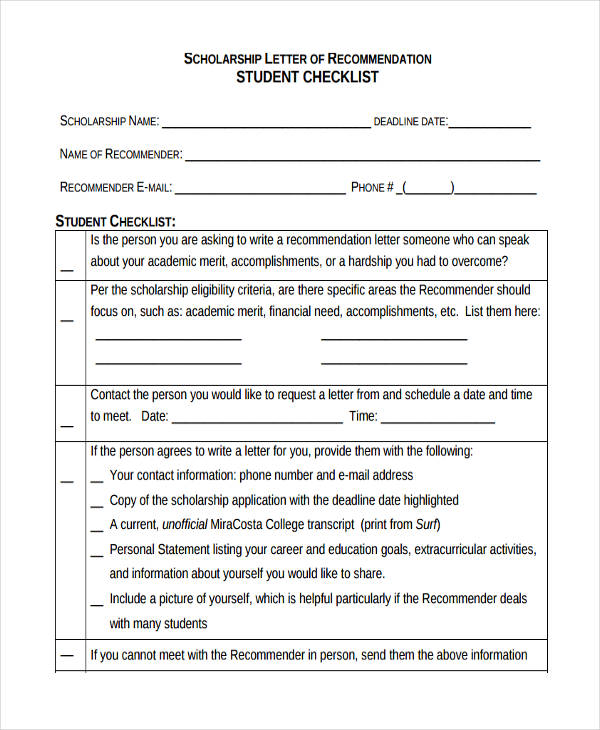
miracosta.edu
Master Scholarship Recommendation Letter
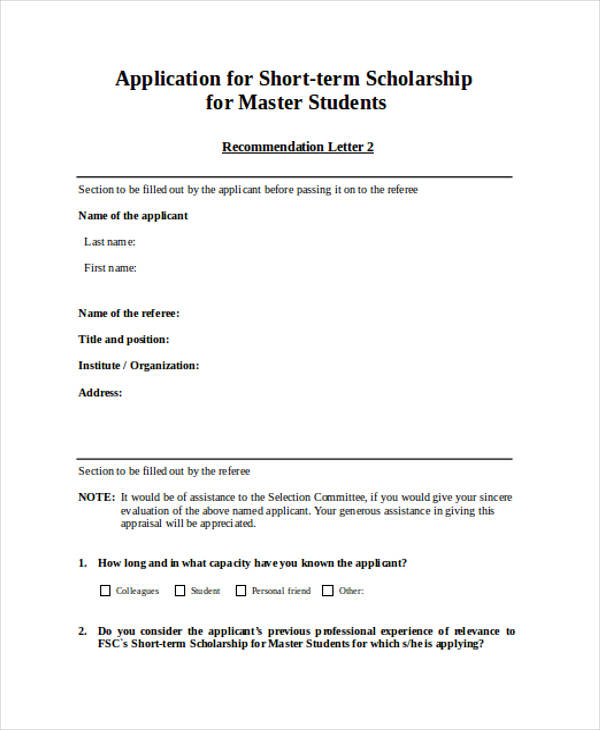
fsc.uni-hohenheim.de
Basic Free Scholarship Recommendation Letter
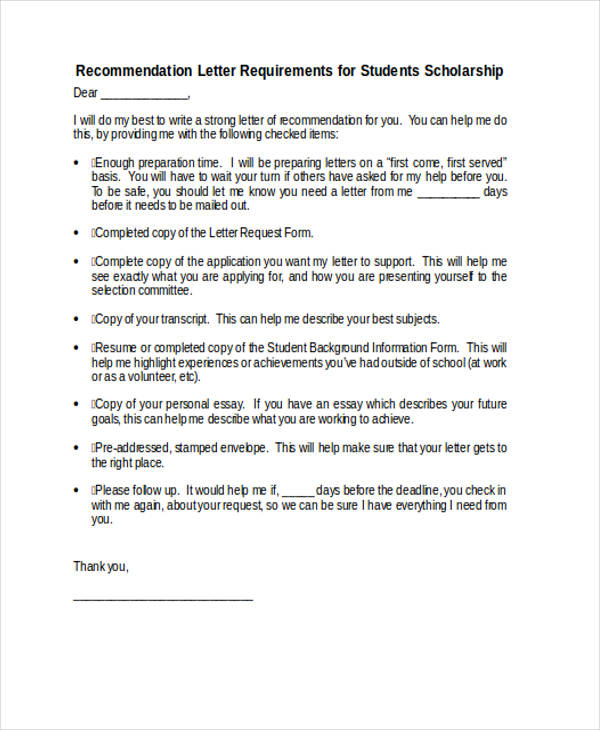
baylor.edu
Teacher Recommendation Letter Examples
Elementary Teacher Recommendation Letter
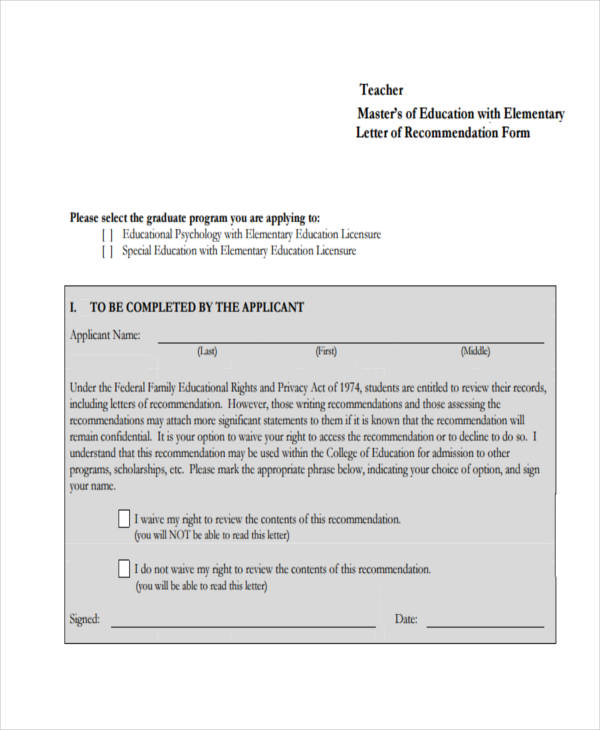
uite.utah.edu
Preschool Teacher Recommendation Letter
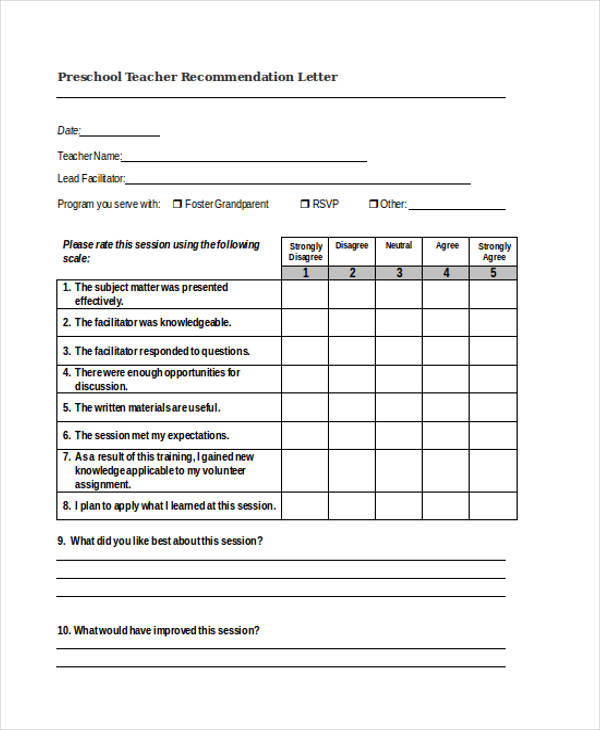
nationalservice.gov
Student Teacher Recommendation Letter
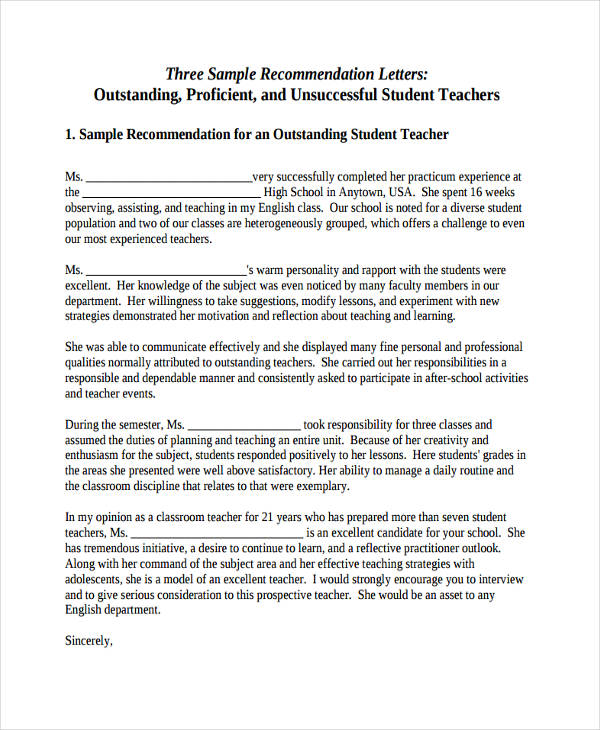
education.und.edu
Tenant Recommendation Letters
Landlord Tenant Recommendation Letter
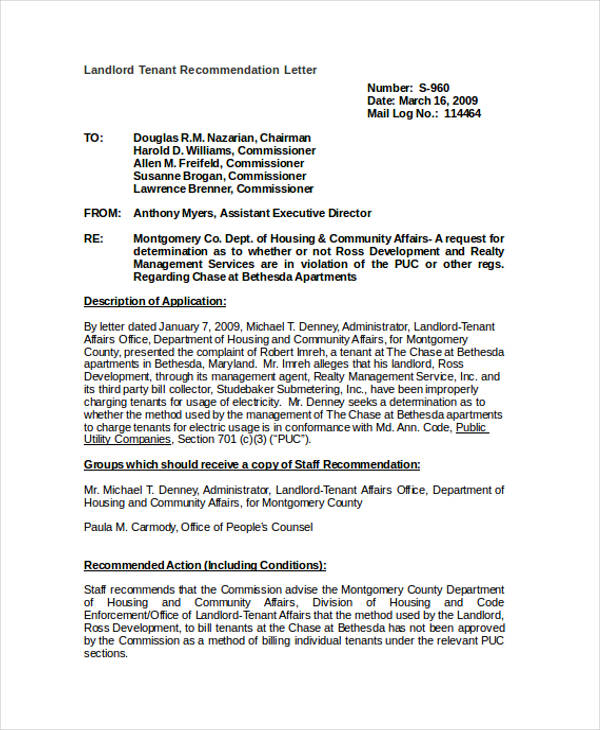
webapp.psc.state.md.us
Commercial Tenant Letter of Recommendation
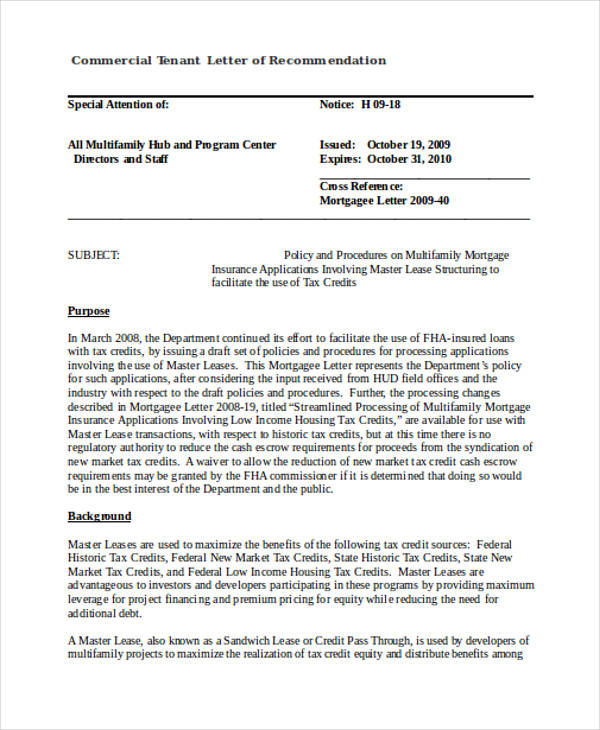
portal.hud.gov
Personal Recommendation Letter for Tenant
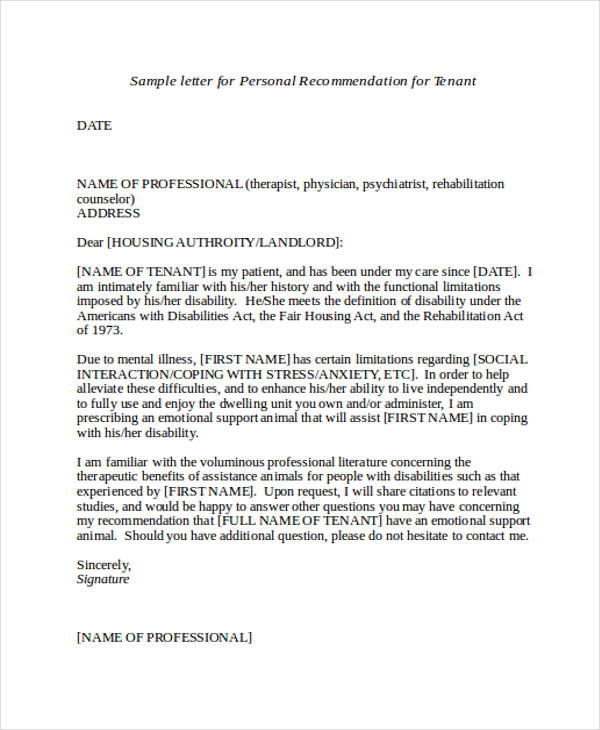
portal.hud.gov
Volunteer Recommendation Letter Examples
Hospital Volunteer Recommendation Letter
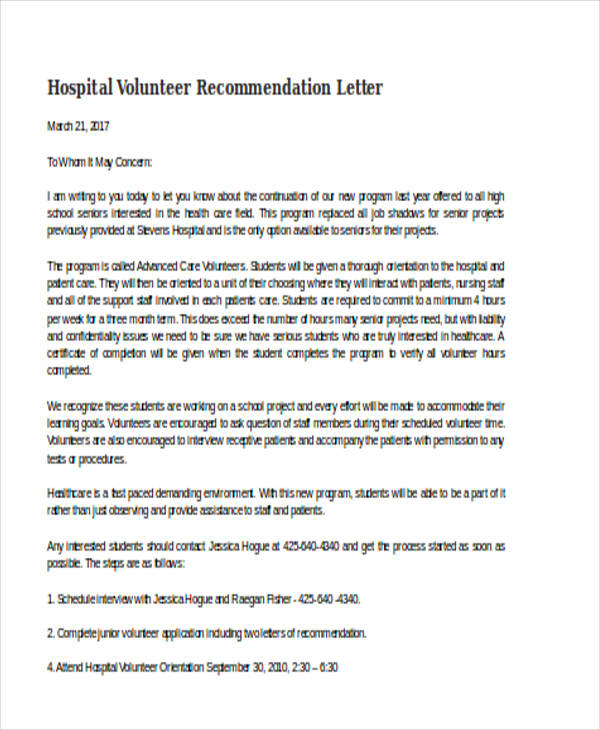
teacher.edmonds.wednet.edu
Personal Volunteer Recommendation Letter
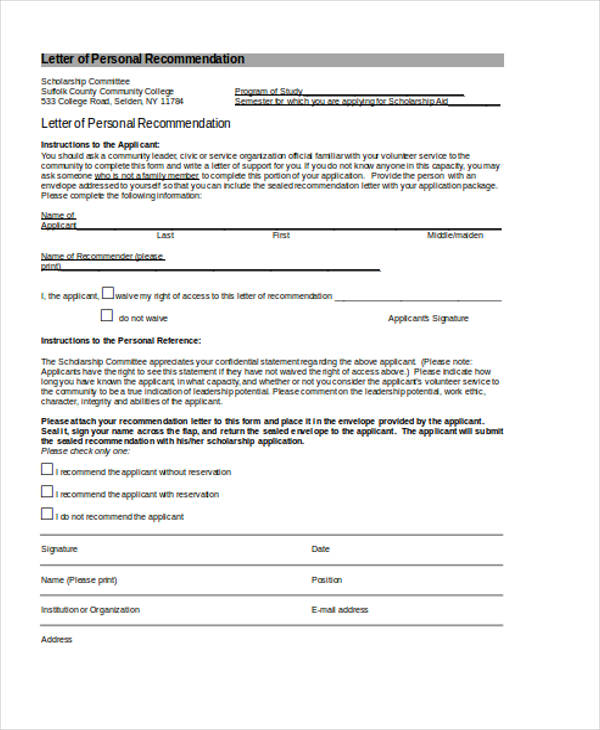
department.sunysuffolk.edu
Volunteer Work Recommendation Letter
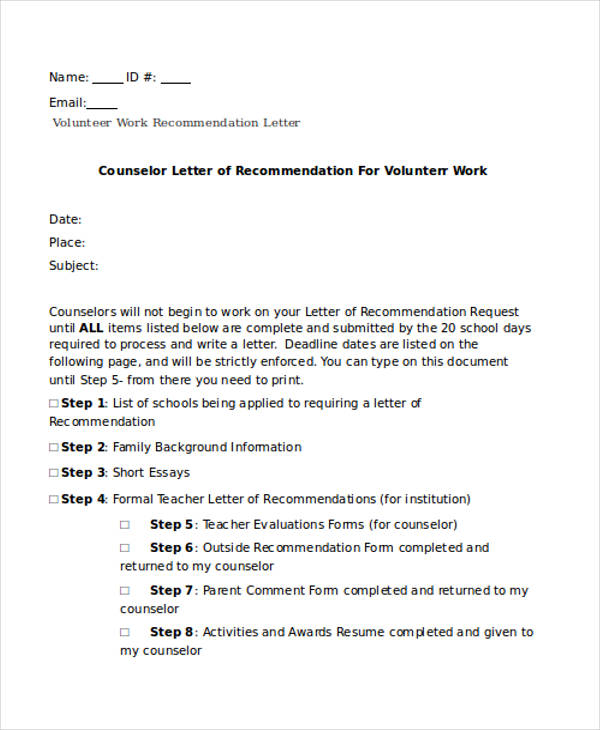
beaverton.k12.or.us
Thank You for Recommendation Letters
Thank You for College Recommendation Letter
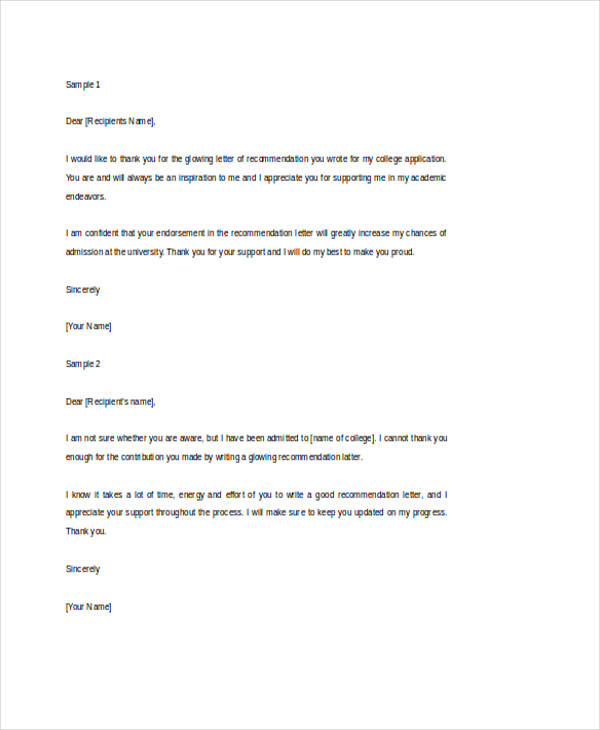
enkivillage.com
How to Write a Recommendation Letter
1. Understand the Purpose
Know the purpose of the letter (e.g., job application, academic admission) and the qualities or qualifications the recipient is looking for. Tailor your letter to these requirements.
2. Gather Information
Collect necessary details about the person you’re recommending. This may include their resume, the job or program they’re applying for, past achievements, and specific instances where they demonstrated valuable skills or qualities.
3. Start with a Proper Salutation
If you know the recipient’s name, use it (e.g., “Dear Dr. Jones,”). If not, “Dear Hiring Manager,” “Dear Admissions Committee,” or “To Whom It May Concern” are acceptable.
4. Introduce Yourself and Your Relationship to the Applicant
In the first paragraph, briefly introduce yourself, your position, and your relationship with the applicant. Mention how long you’ve known them and in what capacity.
5. Highlight the Applicant’s Qualifications and Achievements
Dedicate one or two paragraphs to discussing the applicant’s skills, achievements, and qualities. Provide specific examples and anecdotes that illustrate their capabilities and work ethic. Focus on traits relevant to the opportunity they are seeking.
6. Discuss the Applicant’s Character and Soft Skills
Beyond professional achievements, mention the applicant’s personality, work ethic, leadership qualities, and how they interact with others. This helps give a well-rounded view of the applicant.
7. Explain Why They Are a Good Fit
Link the applicant’s attributes to the requirements of the position or program they’re applying for. Explain why you believe they will succeed and contribute positively.
8. Offer to Provide Further Information
Conclude by reiterating your recommendation and stating your willingness to provide additional information if needed. This shows your genuine support for the applicant.
9. Close with Your Contact Information
End with a formal closing, such as “Sincerely,” followed by your name, title, and contact information. This makes it easy for the recipient to reach out if they have questions.
Job Recommendation Letters
One of the most common usages of recommendation letters is that of a requirement for job applications. Just like when writing an evaluation report for an employee, a recommendation letter written for the particular purpose of evaluating a job applicant should contain the following information:
The date that the job recommendation letter has been written. This allows companies to assure that the job recommendation letter that the reference will submit is updated and is based on their specifications and requirements.
The name of the job applicant to whom the job recommendation letter is for. A reference needs to make sure that he/she will state the name of the applicant to avoid misplacing the document within the processes of requirement filing and recording. This also gives higher chances for the job recommendation letter to not be credited to other applicants should mishaps in storage occur.
The relationship of the reference to the applicant. An employer needs to identify the professional relationship of the reference and the person who is applying for a job position. This makes the company evaluate whether the job recommendation letter is objective and professionally made.
The reason why the reference accepted the request to write a job recommendation letter. A reference needs to specify his/her strong urge to recommend a candidate as this can add to the weight of the content of the job recommendation. This area of the letter can provide the efficiency of an applicant to execute a work plan or other items that the reference adores about the applicant.
The qualifications of the applicant that makes him/her fit for the job. A reference should have a wide range of ideas or knowledge about what an applicant can bring to the table. This will help the applicant to prove that he/she has the deliverable that the company needs for its operations.
Who Can Be Your Reference for a Job Recommendation Letter?
Your reference is the person who will write a job recommendation letter for you. If you will use a recommendation letter for your job application, some of the references that you may have included the following:
Your workmates in your previous employments. It will be helpful if you will be recommended by your previous workmates. The people whom you have worked with for a duration of time can exemplify your dedication and knowledge areas accordingly.
Your previous immediate heads. You have been assessed and evaluated by your immediate heads. Your supervisor and manager can have an easier time writing a recommendation letter for you as they have already done it for your regularization and/or promotion.
The human resource department employees and other administrative employees within your department. Your attendance, performance report, work ethics, and professional value statements are very well known by the HR department as they have the record of these items. If you want to give a highlight on your track record as an effective and efficient employee presented in an organized report structure, you can ask people from the human resource or any administrative division of the companies where you previously rendered your services.
The training coach of your team. If there are any training coaches that you have worked with, you can also ask this person to write a recommendation letter for you. This person is well aware of your core competencies and development which is why they will be a great choice as a reference.
The counselor of the company where you previously worked. Company counselors deal with your personal and professional issues which may affect your performance report of work. Through their guidance, you can cope up even more with the expectations and requirements of the job that you are currently handling. Making them your reference will allow the company to assess how you have been keeping and coping up with the work phases of your previous companies.
Some of the items that you may consider in selecting a reference in this particular usage of a recommendation letter are as follows:
The time duration that the reference has been related to the applicant.
The qualifications of the reference.
The relevance of the competencies of the reference to the industry where the candidate is applying for a job.
Other Kinds of Recommendation Letters
Unlike a offer letter, which states how a qualified candidate can benefit should he/she accept the offer of a business, a recommendation letter is created to showcase how an entity can benefit from the applicant.
Aside from its association in the job application of an individual, there are still other usages that a recommendation letter is deemed necessary.
Some kinds of recommendation letters include the following:
A college admission recommendation letter is for an applicant who would like to have a slot in a particular academic program. College admission recommendation letters are used to outline in word an applicant’s competencies that may add value to the academic institution and its operations.
A scholarship recommendation letter is written by a reference to support an applicant who would like to receive a scholarship grant. This kind of recommendation letter is essential as the entity who will provide the scholarship should have a clear idea of why a candidate is deserving of the scholarship.
A volunteer recommendation letter is most likely created to assure a non-profit organization that an individual is capable of doing volunteer works and that he/she truly has the passion to help others especially those who are in need.
Whatever recommendation letter it is that you are making, you need to make sure that the items and discussions that you will provide can be beneficial to any kind of application that an individual who will use the letter is immersed in.
General FAQs
1. What is a Recommendation Letter?
A letter of recommendation is a document that is submitted by a candidate who is applying for a job, internship, college application, or volunteer opportunity. This letter allows the employer or the hirer to learn about the applicant and get answers about their performance or habits.
2. What is the Structure of a Recommendation Letter?
The structure of a recommendation letter is as follows:
Your brief introduction and your relationship with the applicant
An overview of the applicant’s strengths
Examples elaborating the traits of the applicant
A closing statement recommending why the candidate is a good fit
Signature including your name and contact information.
3. Who Needs Letters of Recommendation?
A letter of recommendation is needed by students who are applying for university, grad school, or scholarships and by people who are applying for a job that requires strong references.
4. What are the Characteristics of an Effective Recommendation Letter?
The characteristics of an effective recommendation letter are as follows:
It comes from a credible source
It makes use of supportive and positive language
It is specific and contains a narrative
It is relevant to the applicant’s goals.
5. What Information Should You Provide to the Person Writing Your Recommendation Letter?
Here’s the information you need to provide to the person writing your letter:
Your resume & cover letter
Your statement
The name of your target university
A link to the description of your target program
Personal strengths and achievements you’d like for them to focus on.


